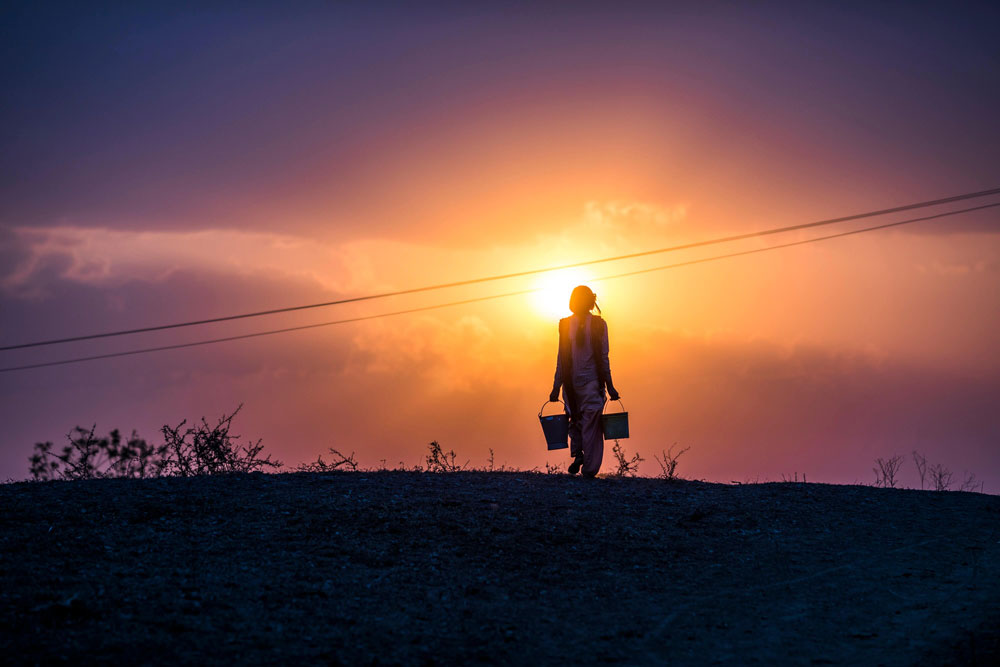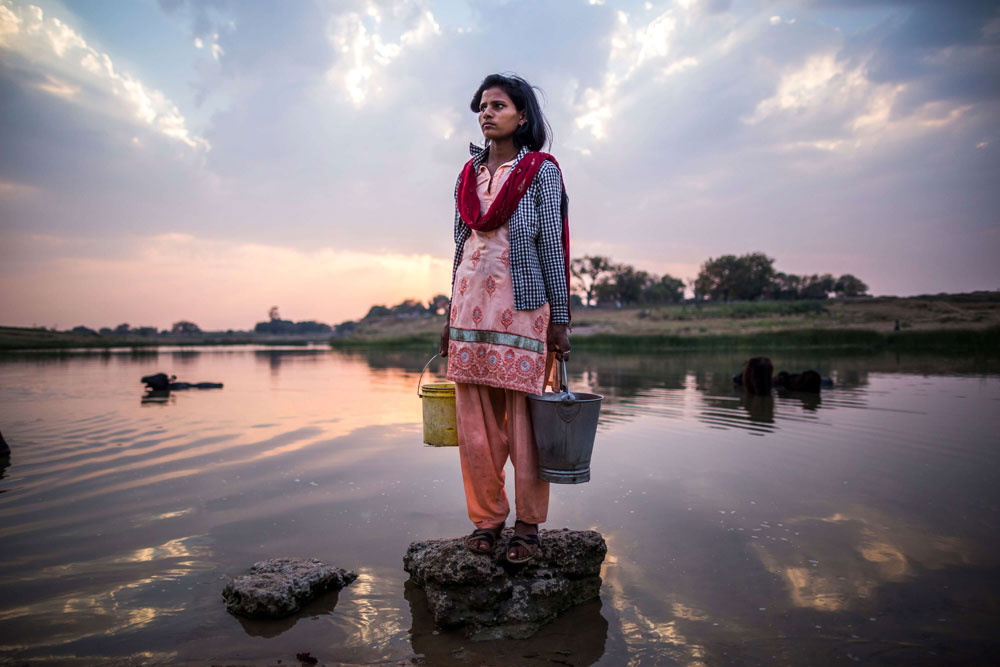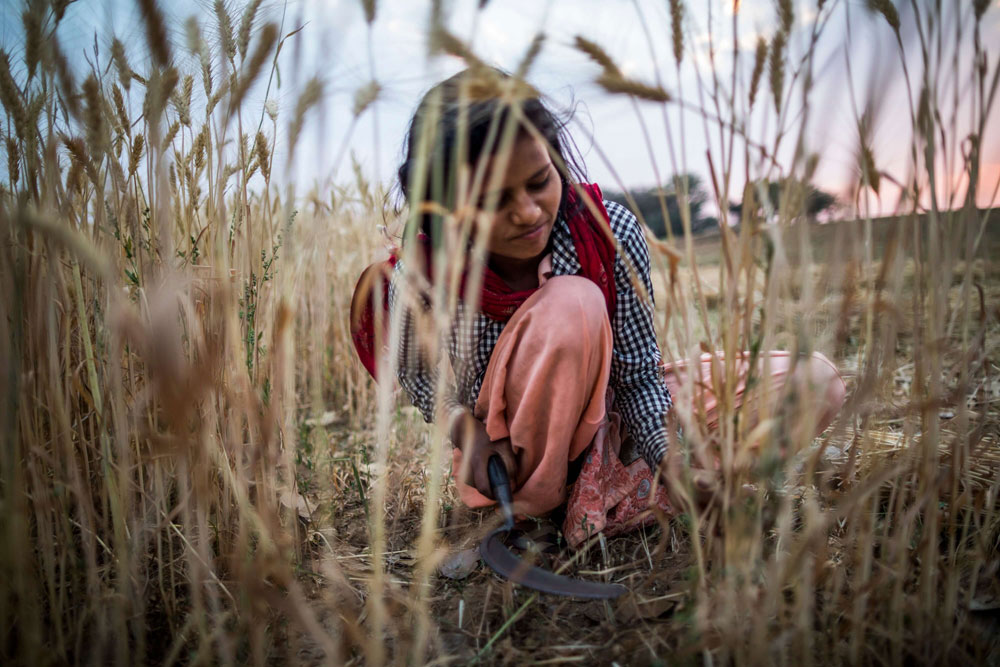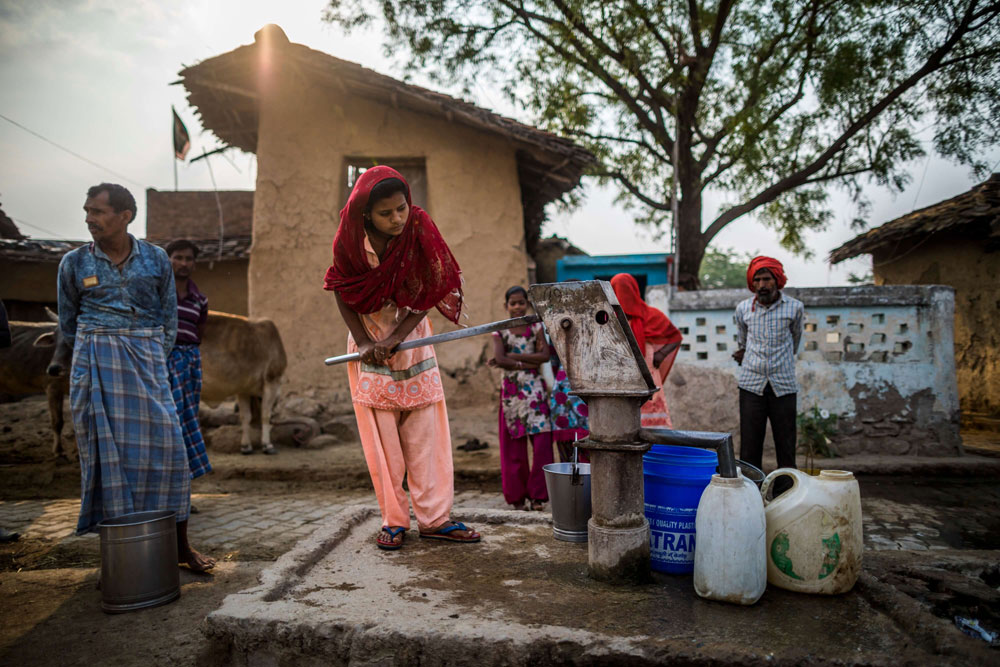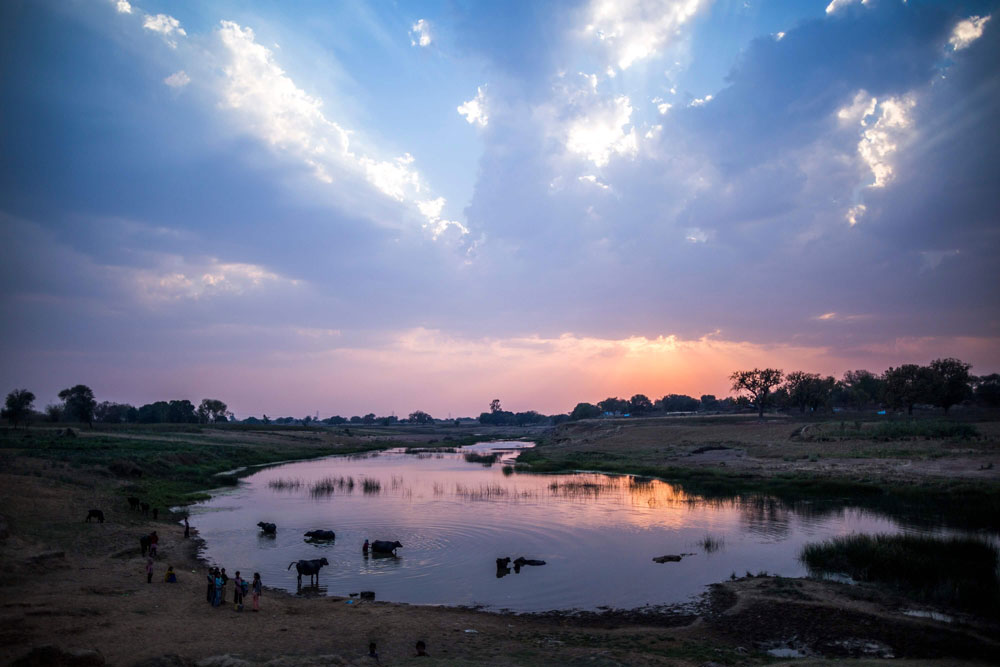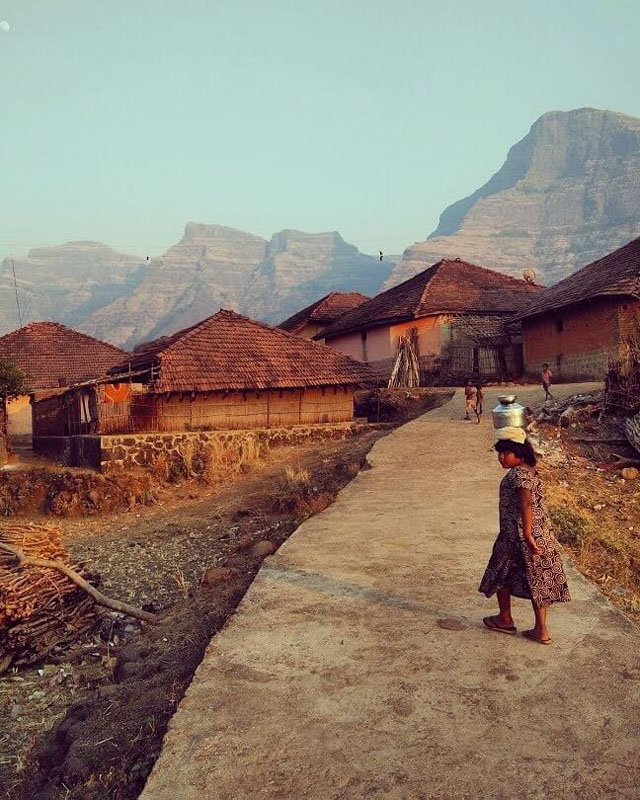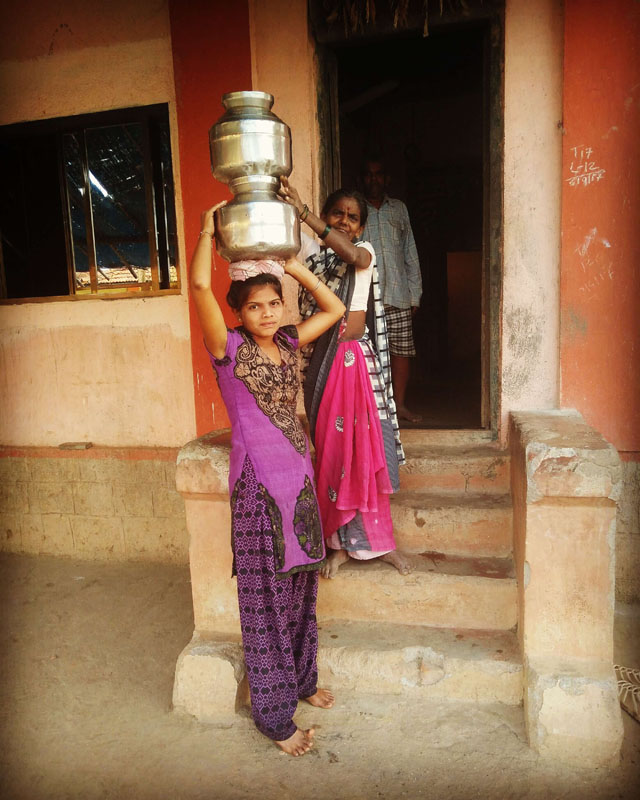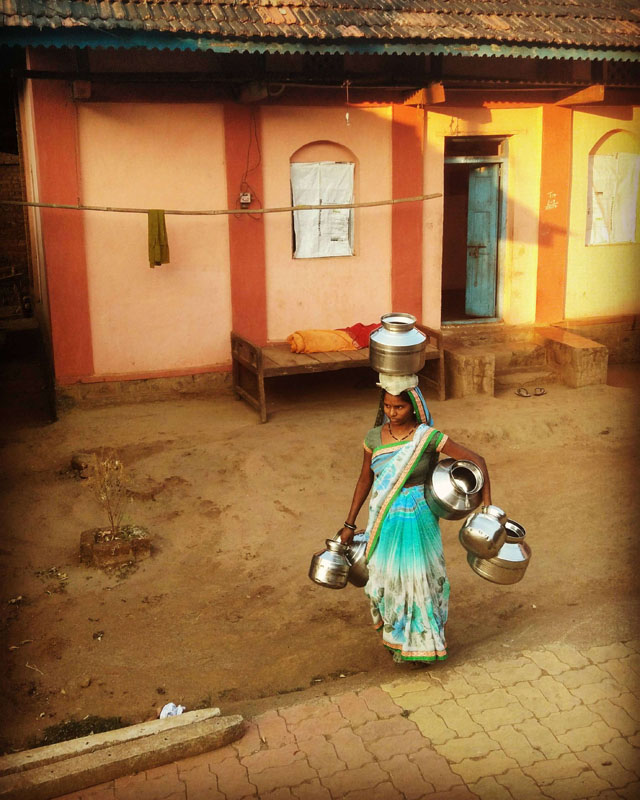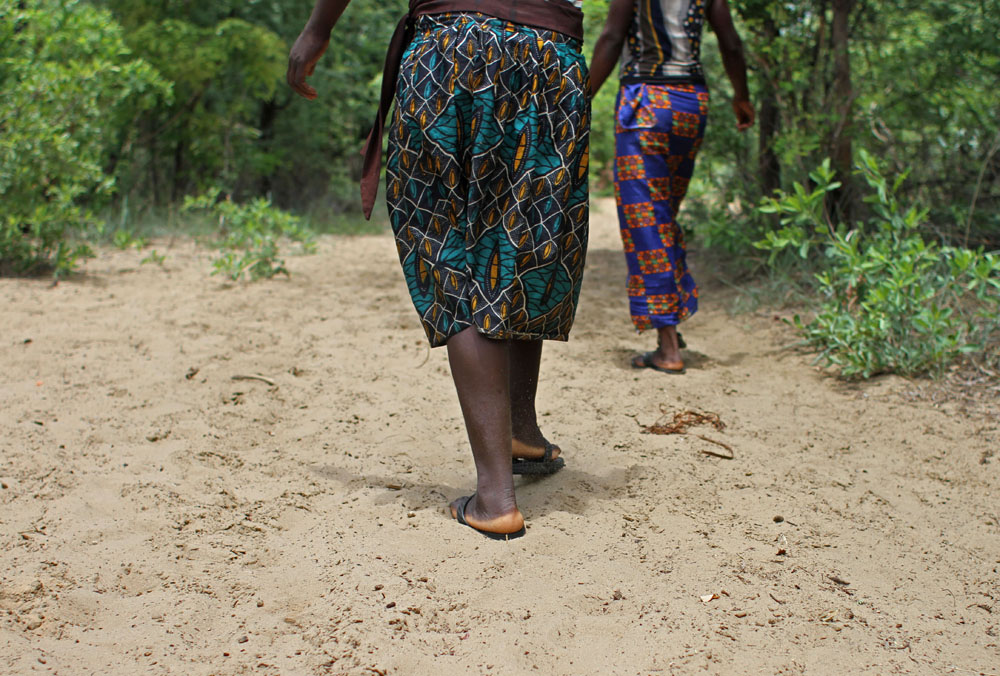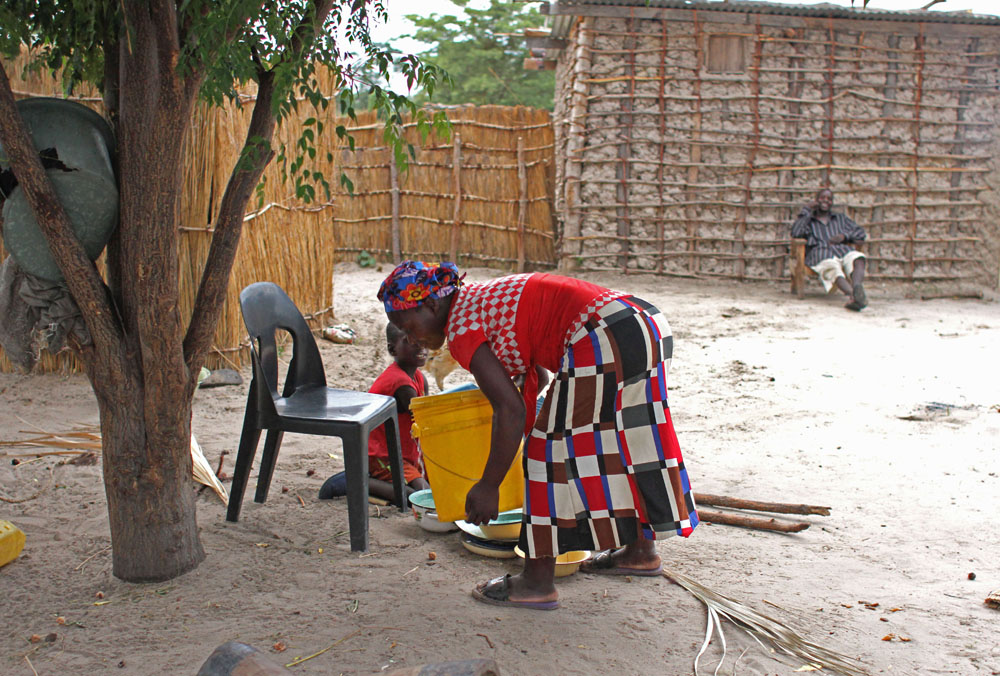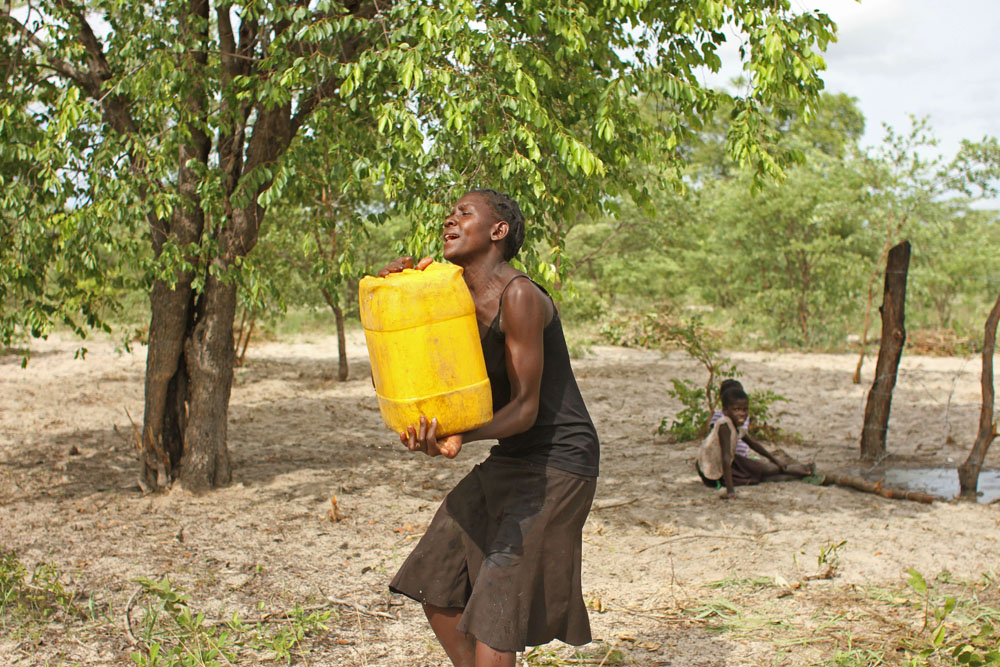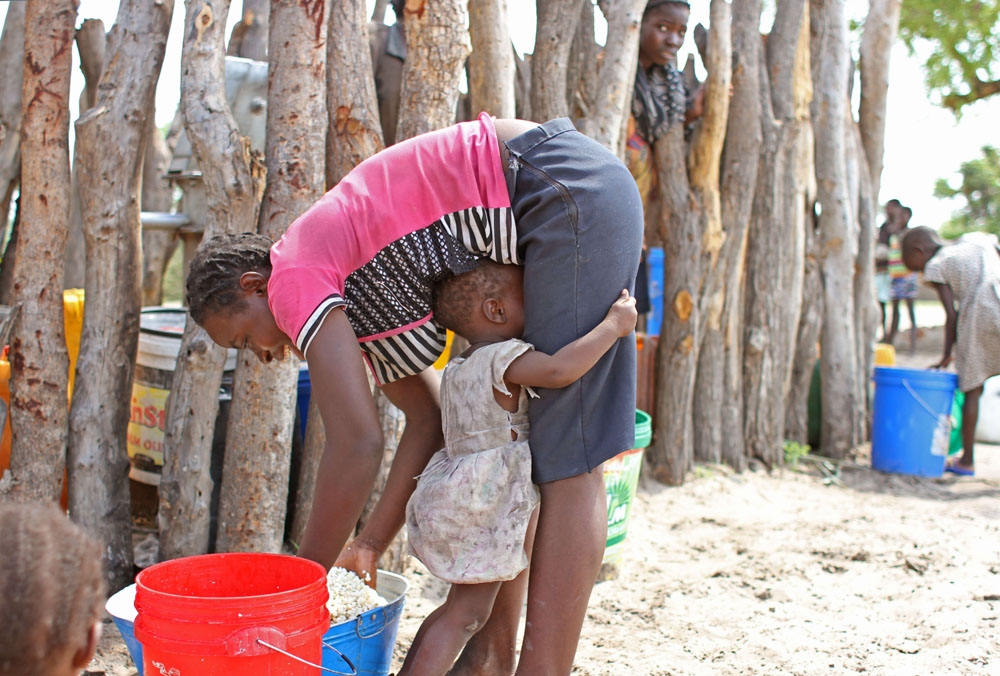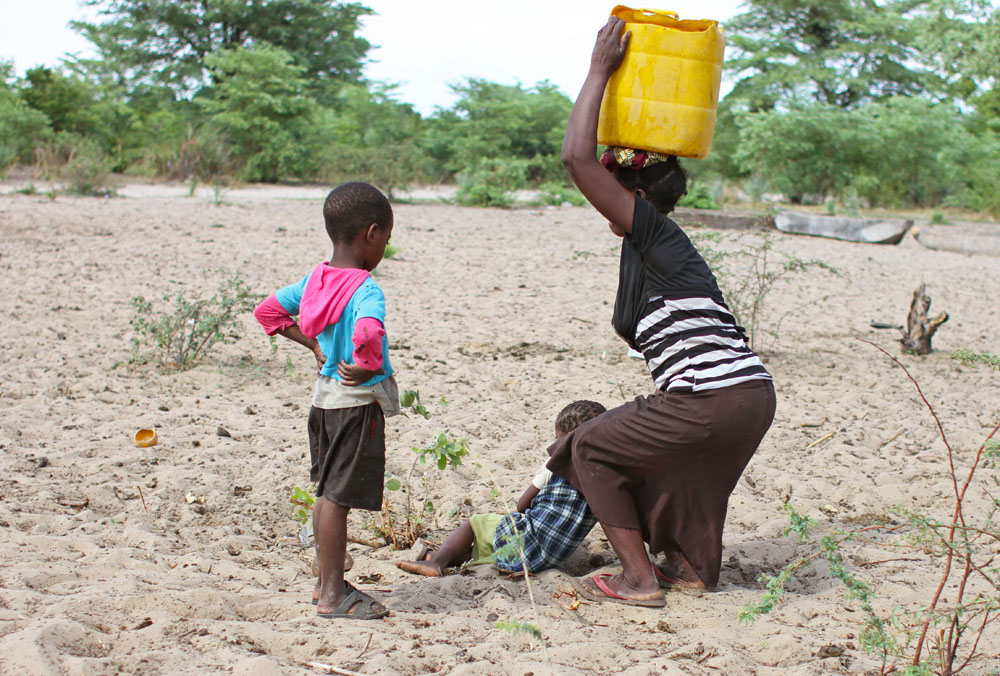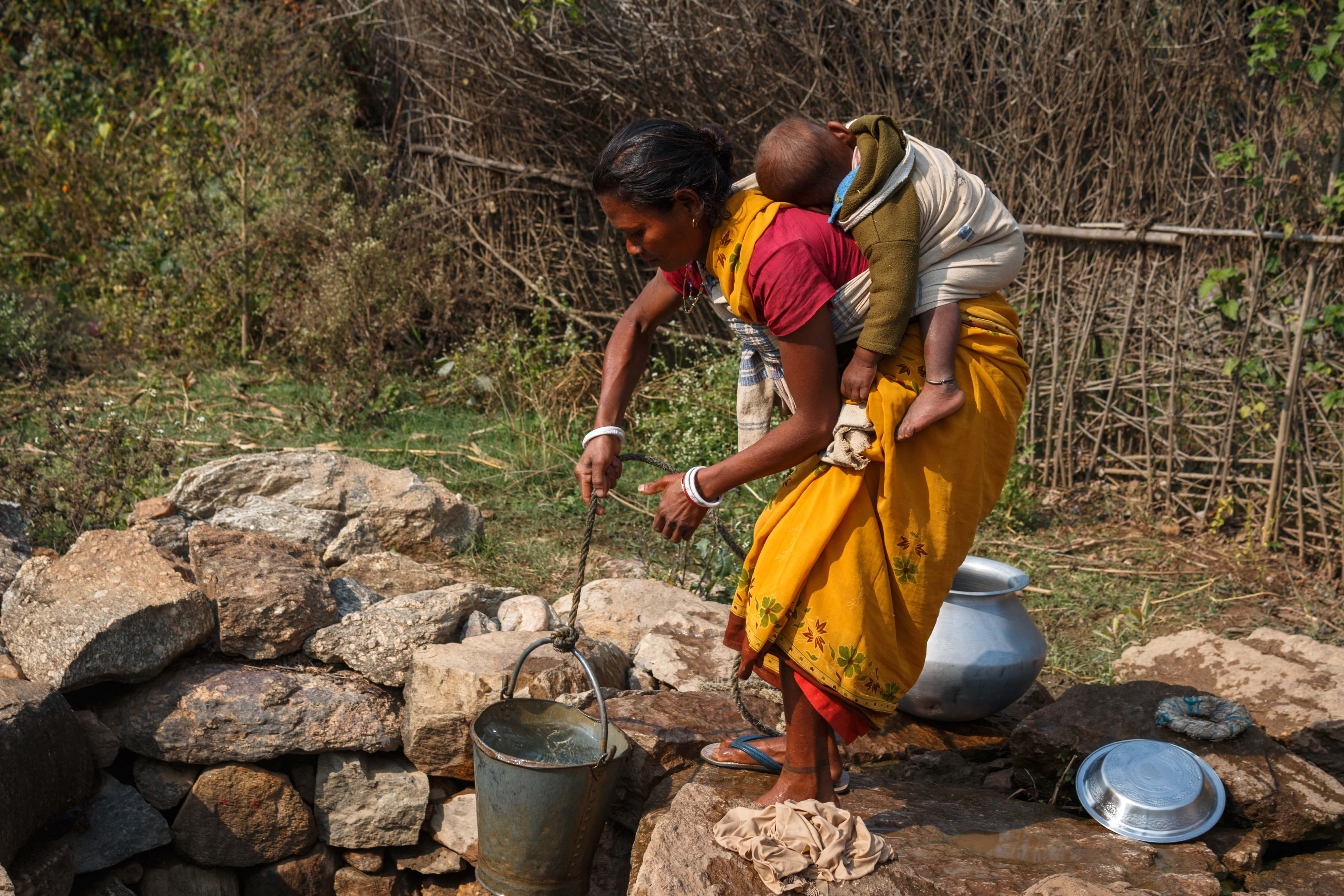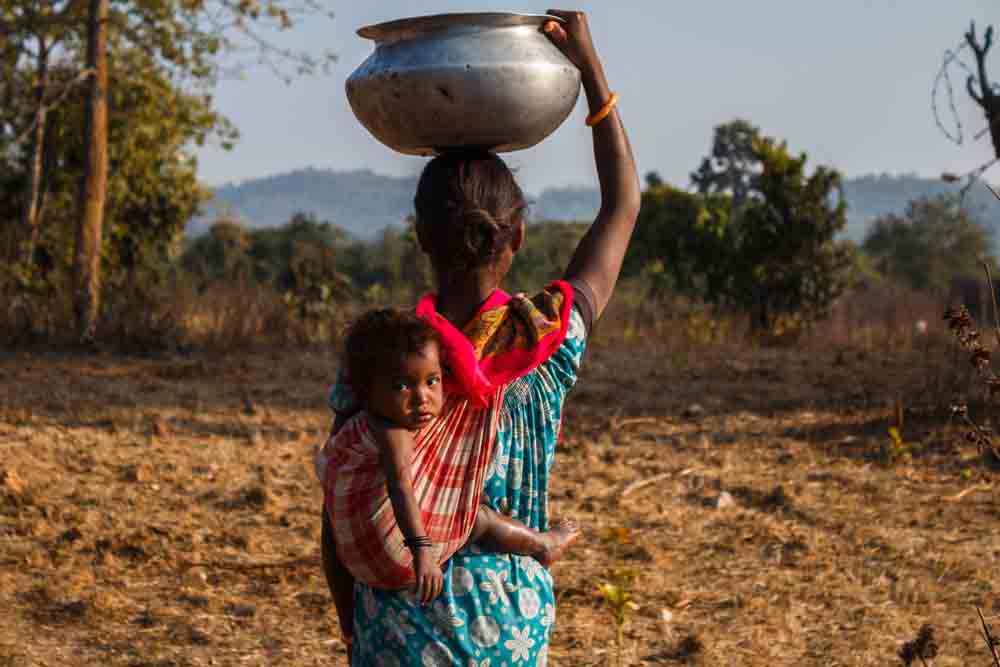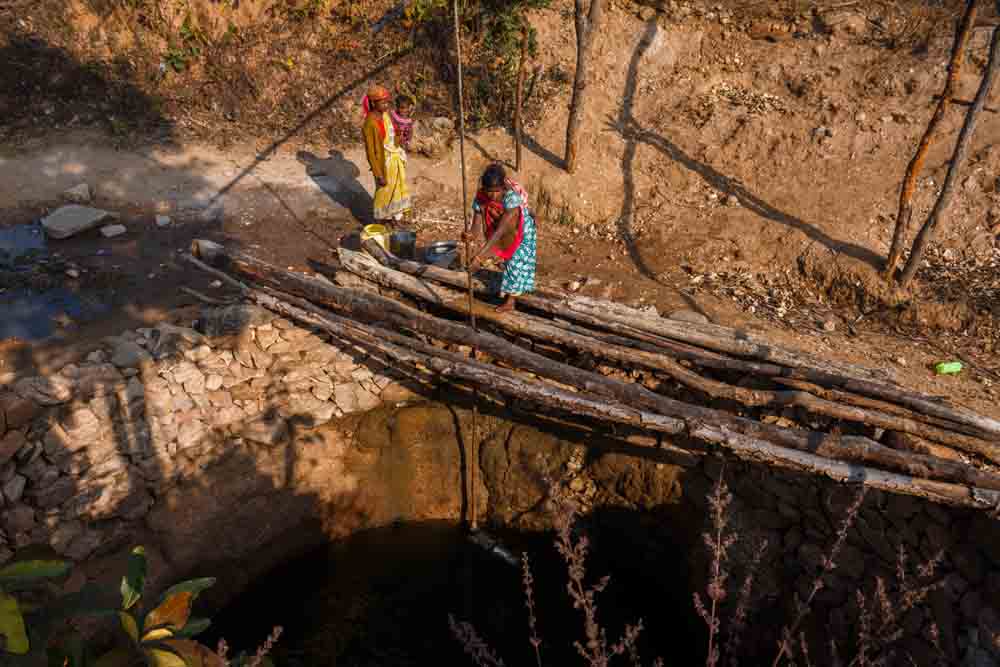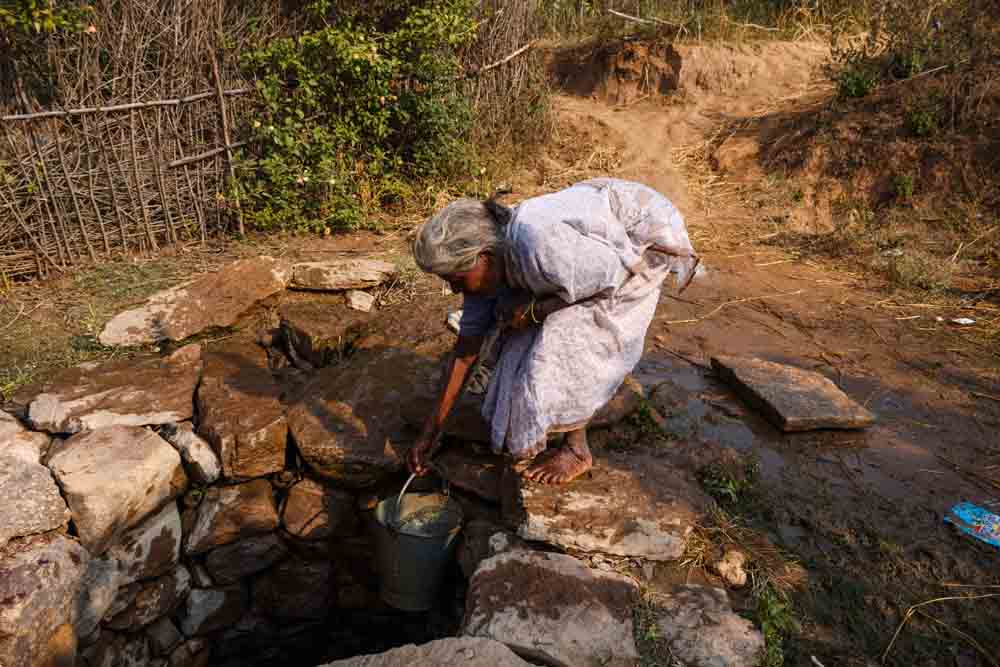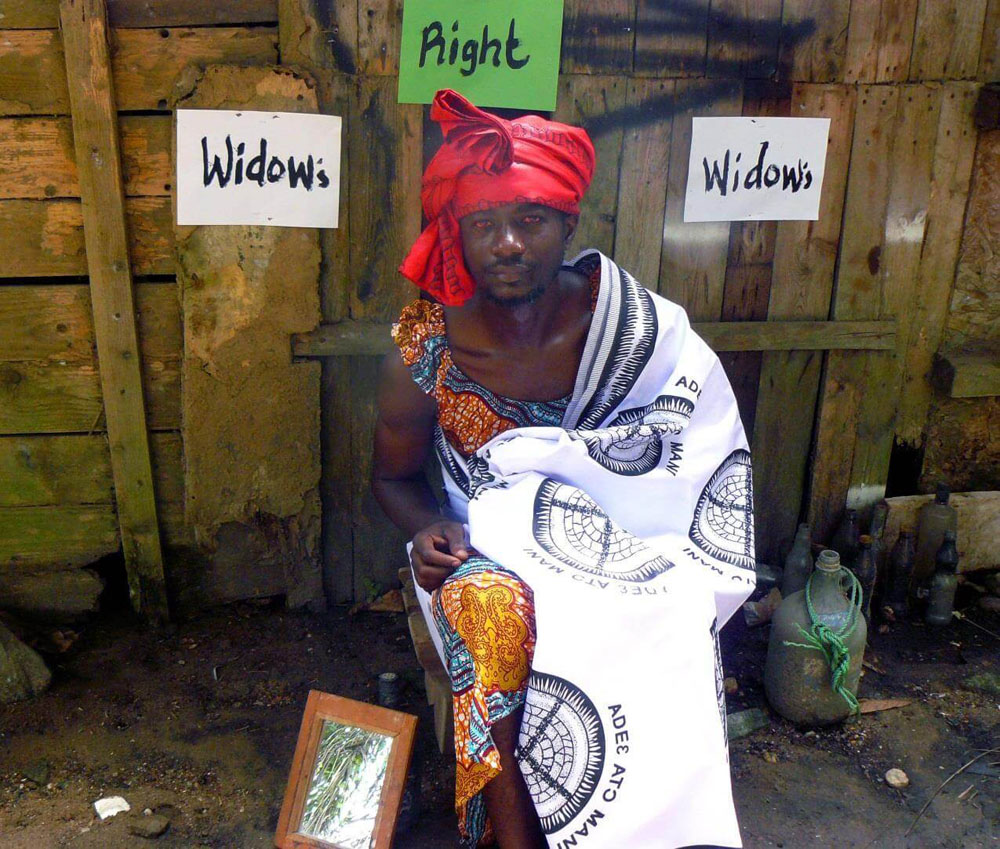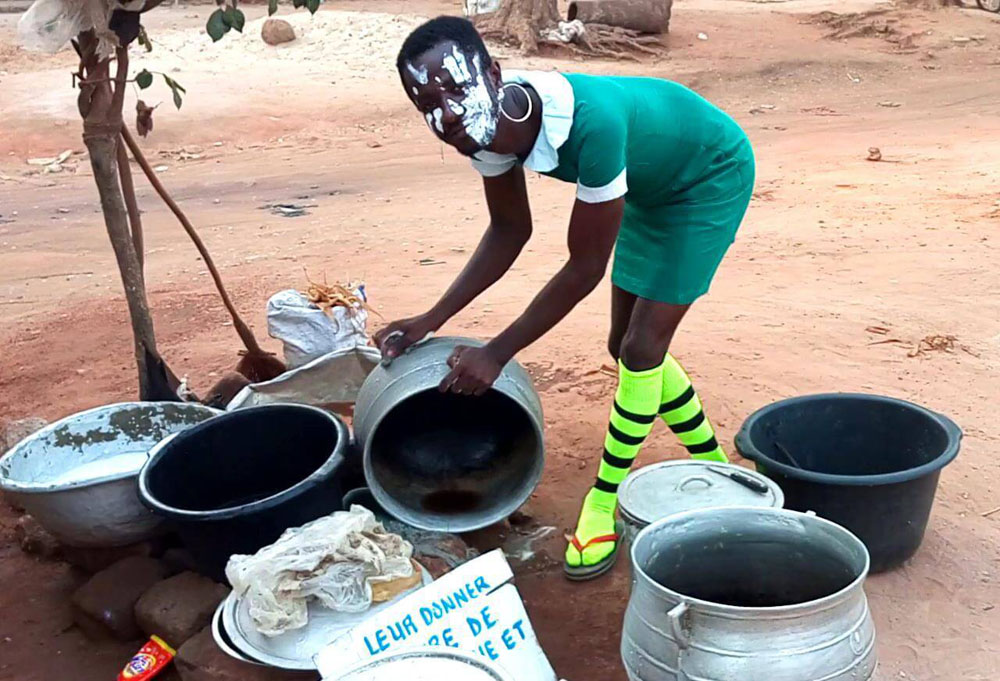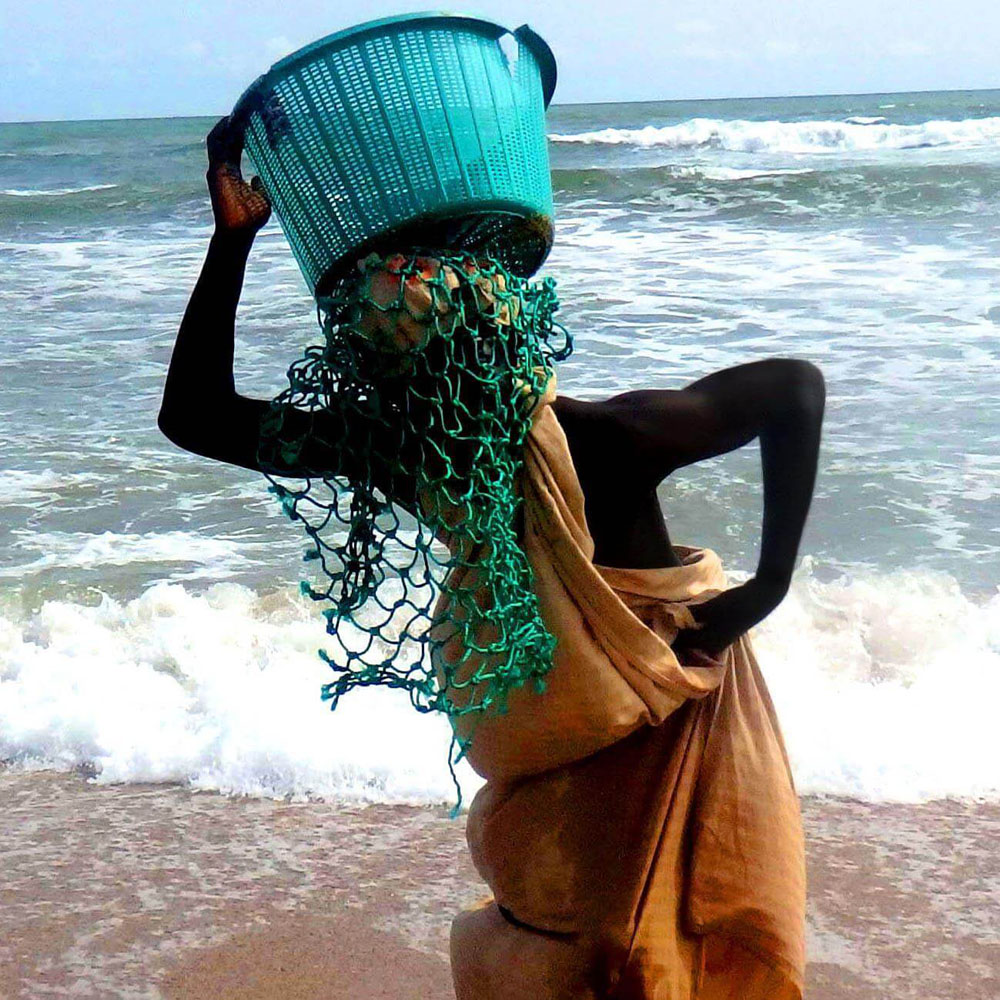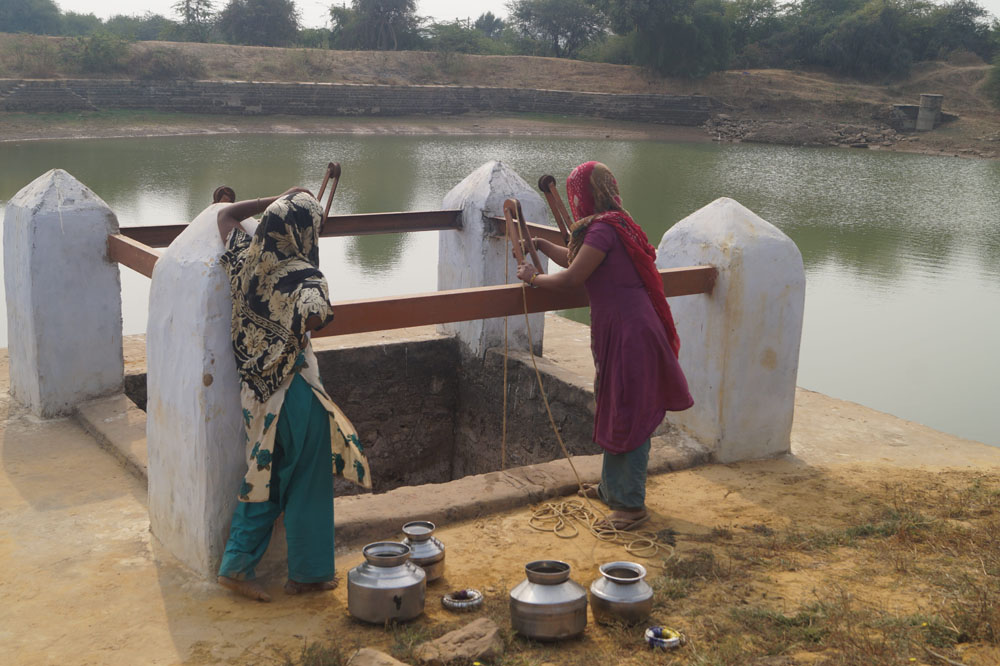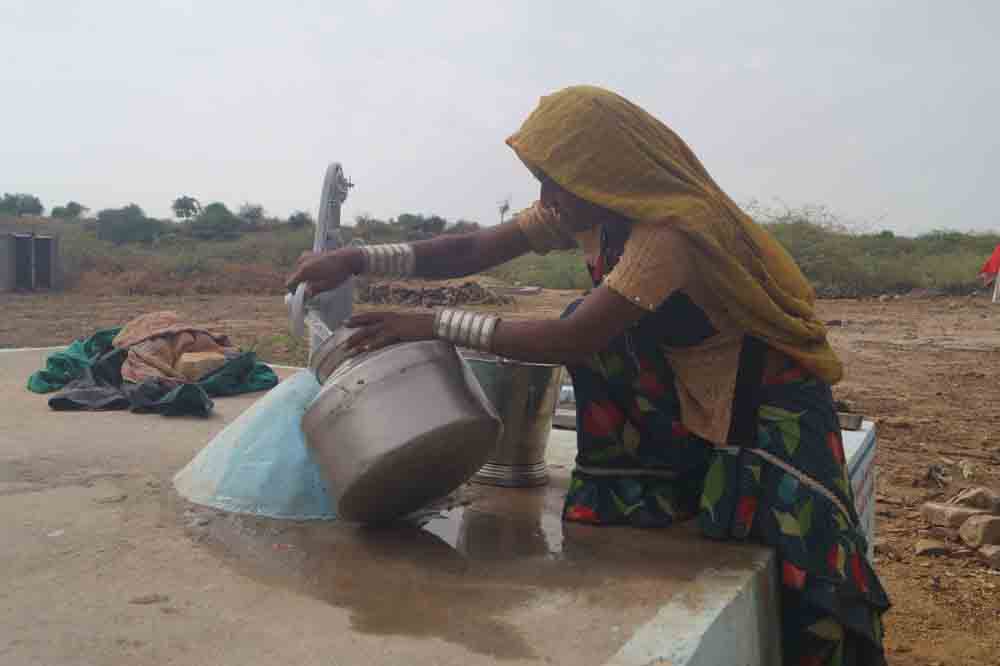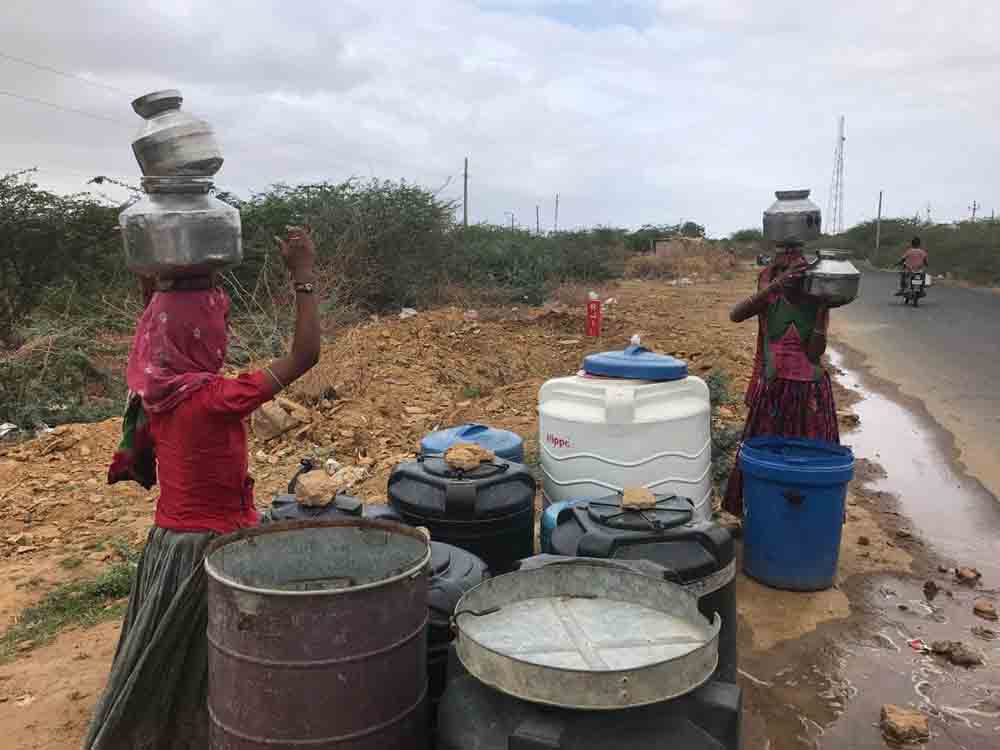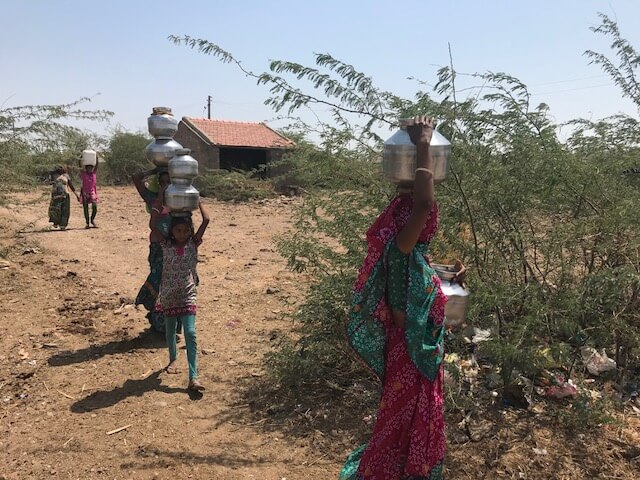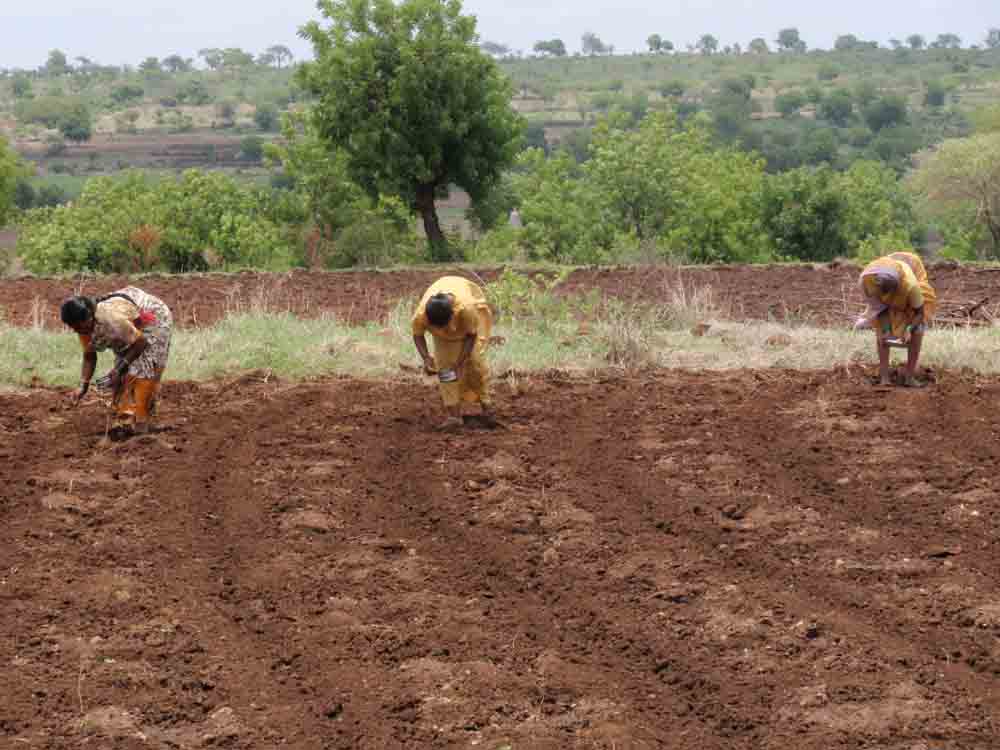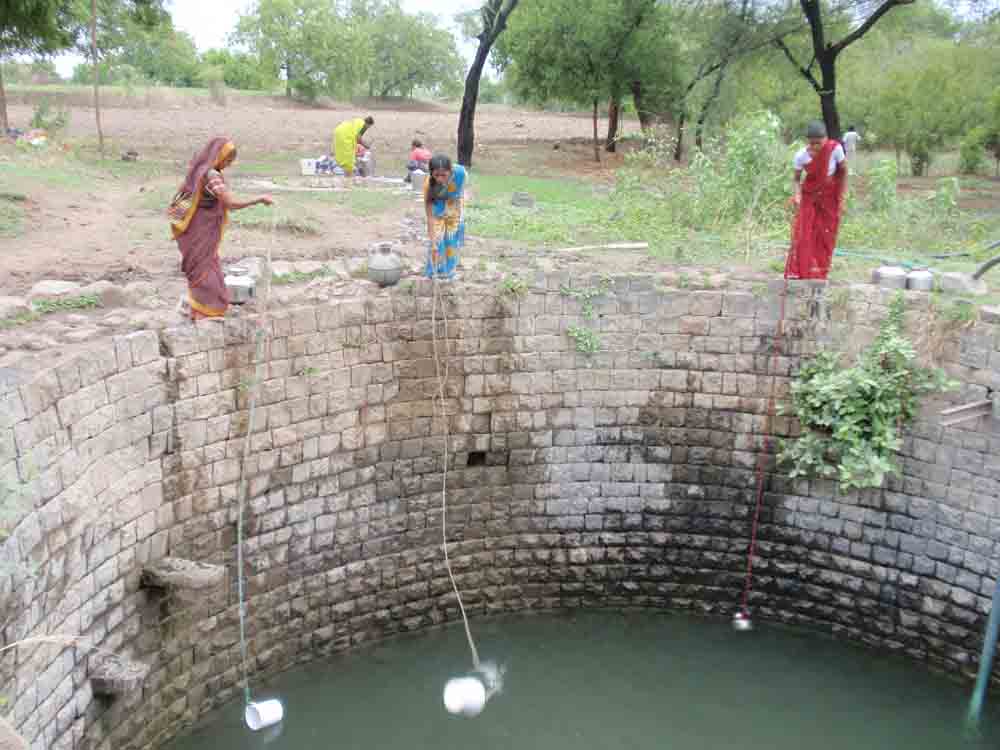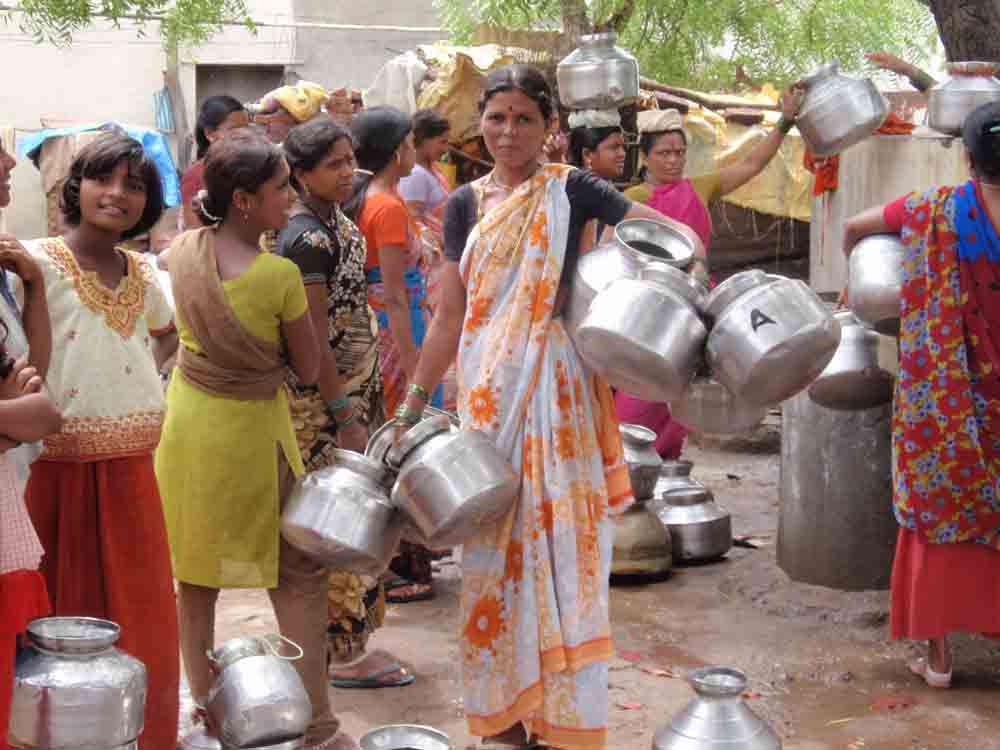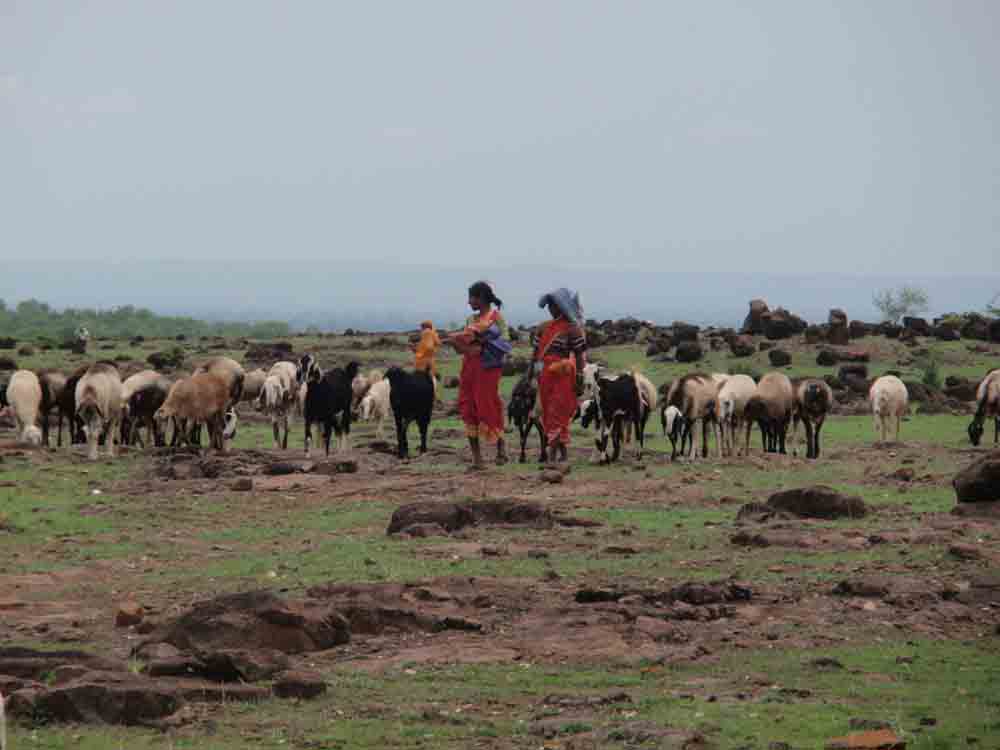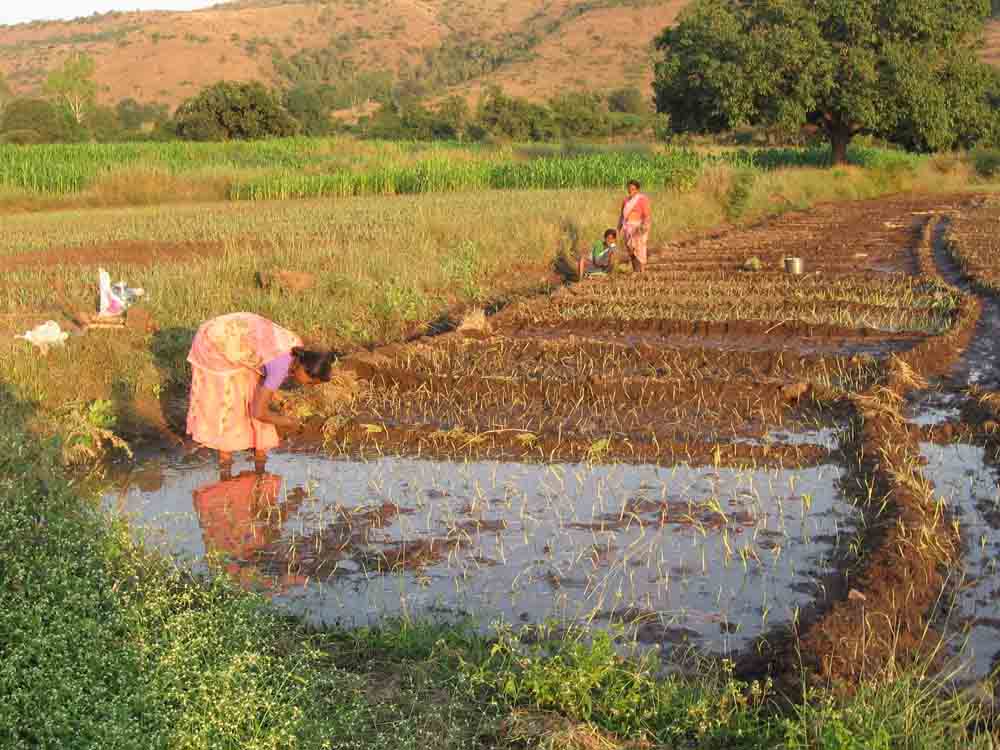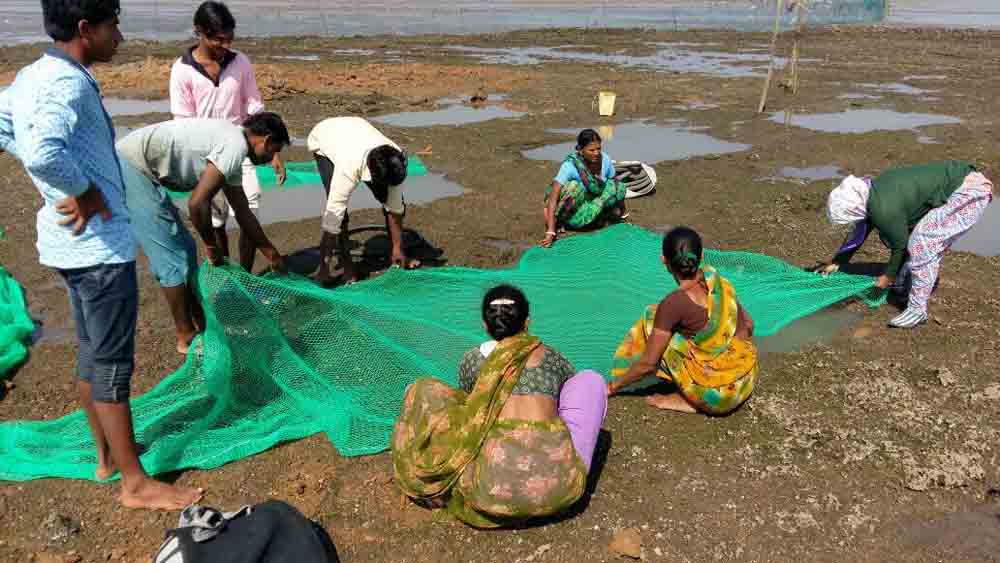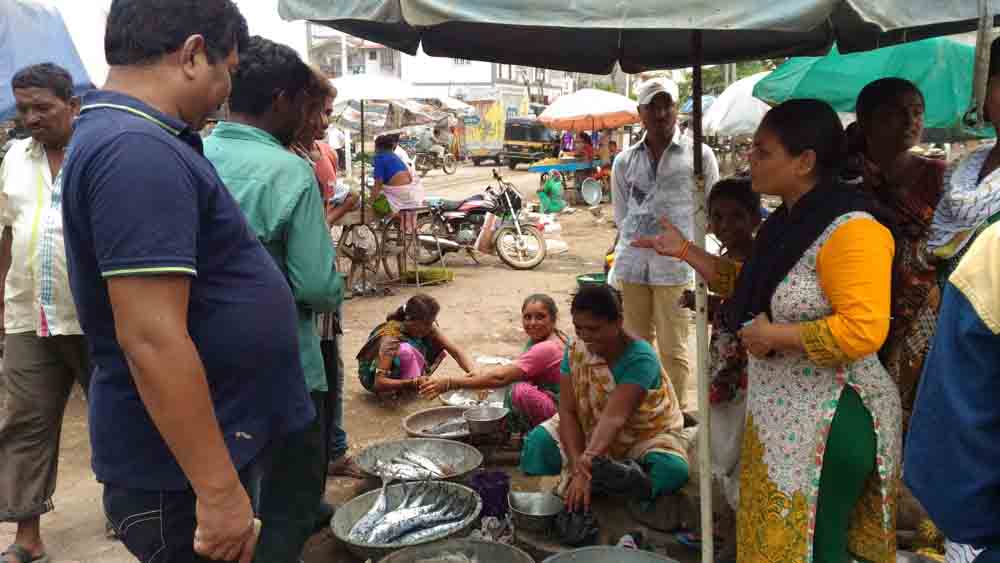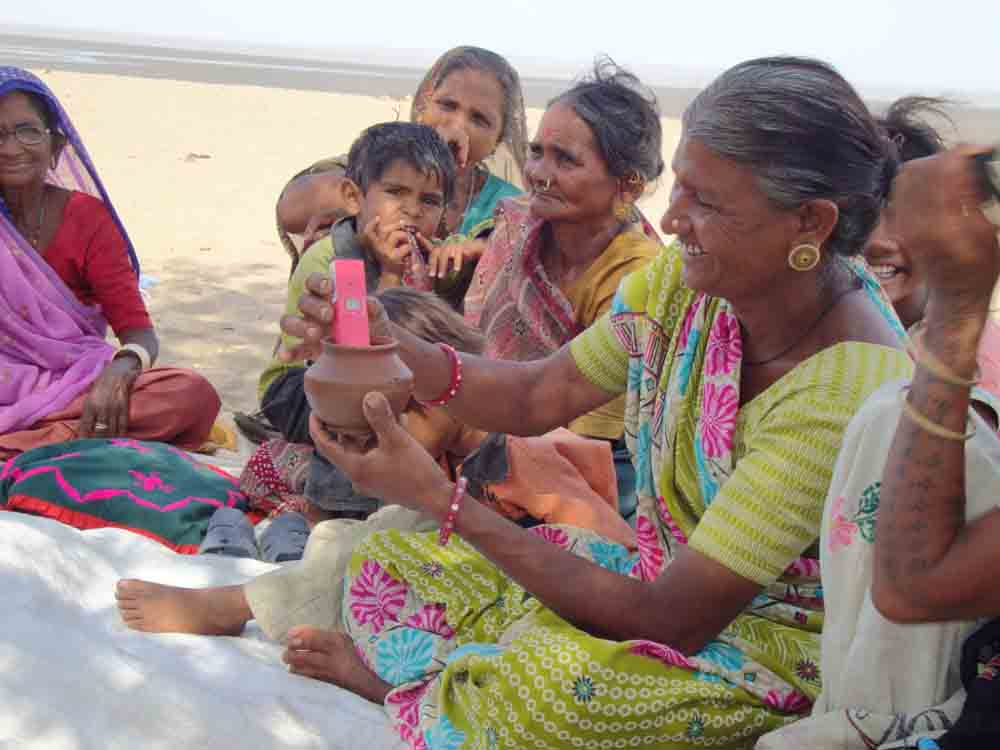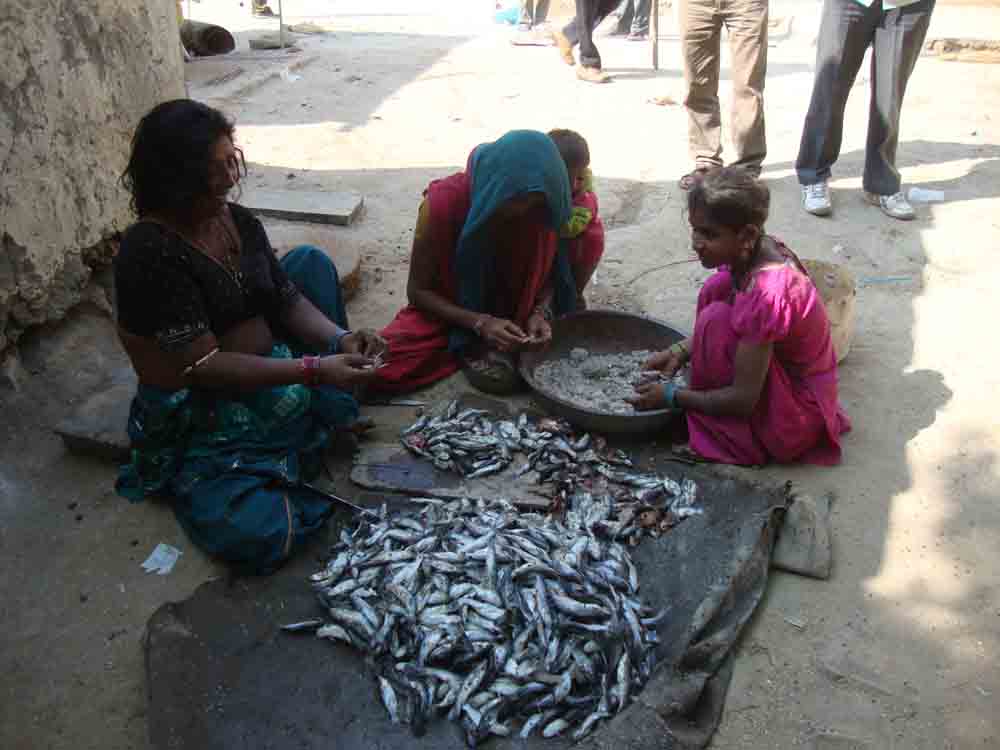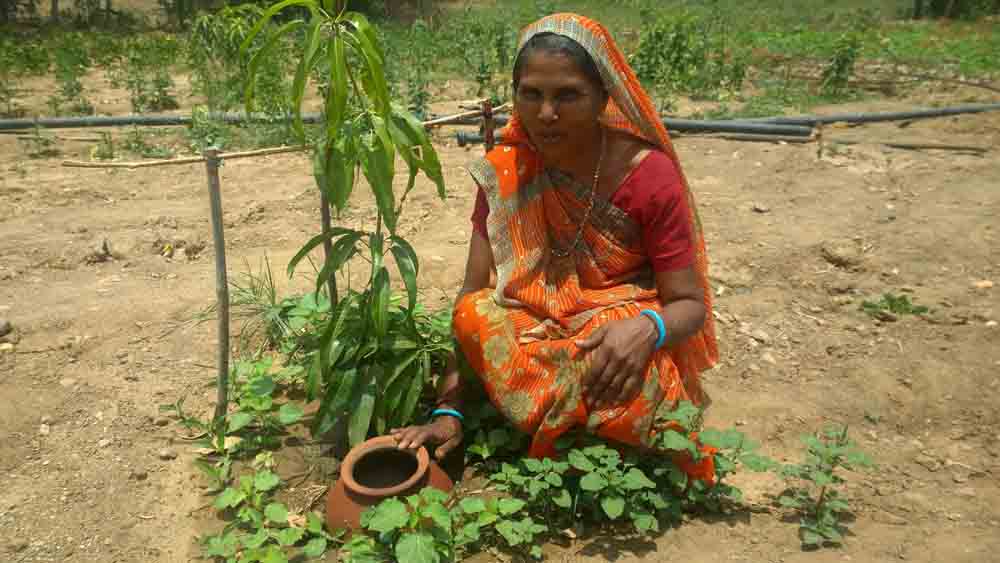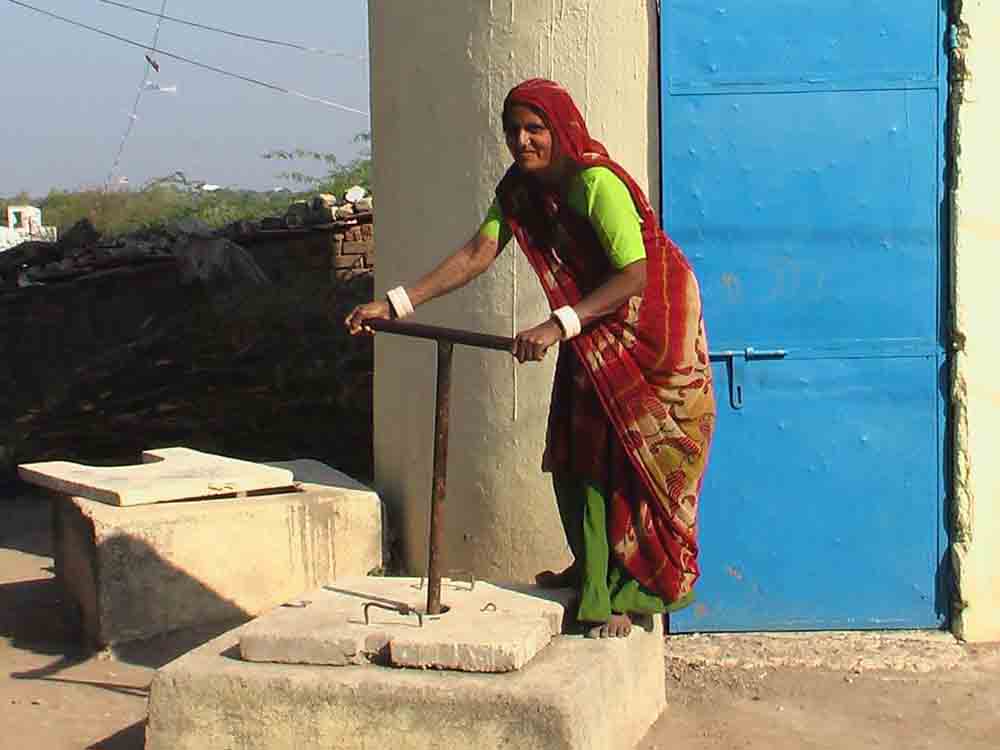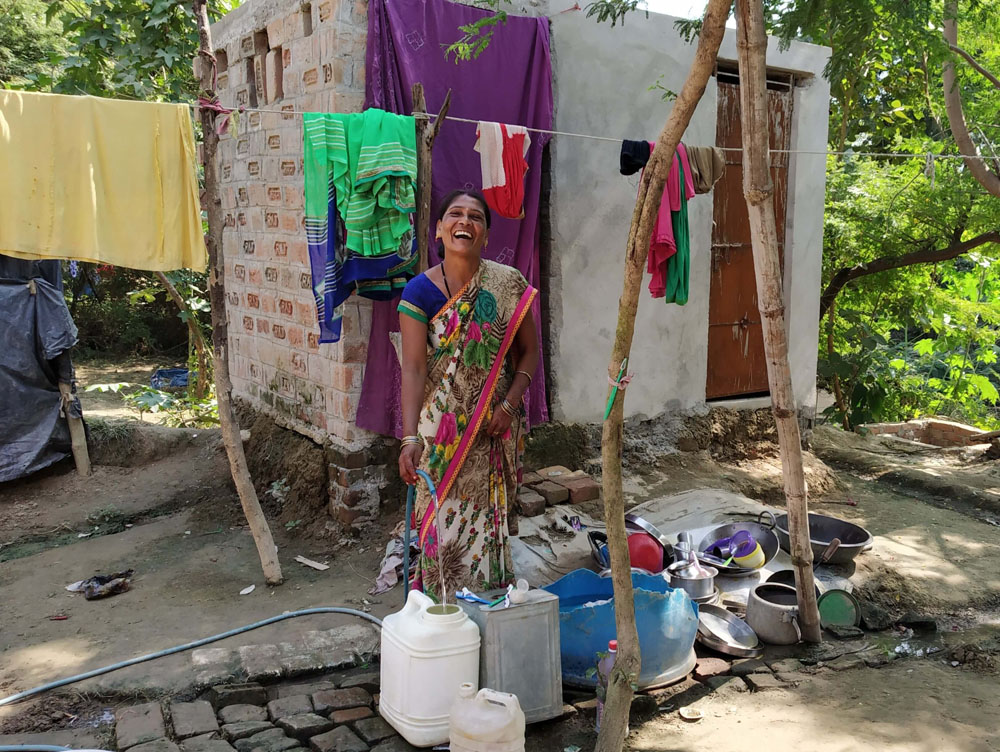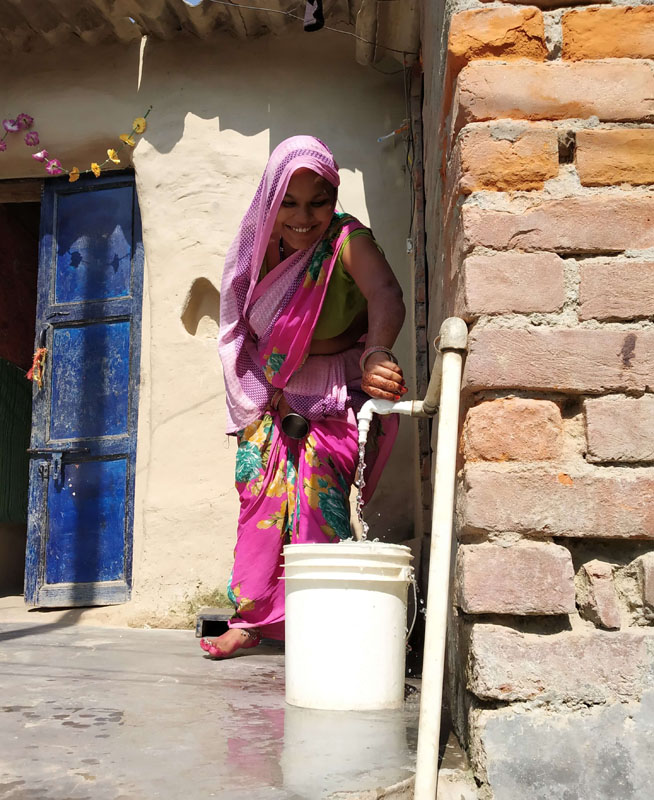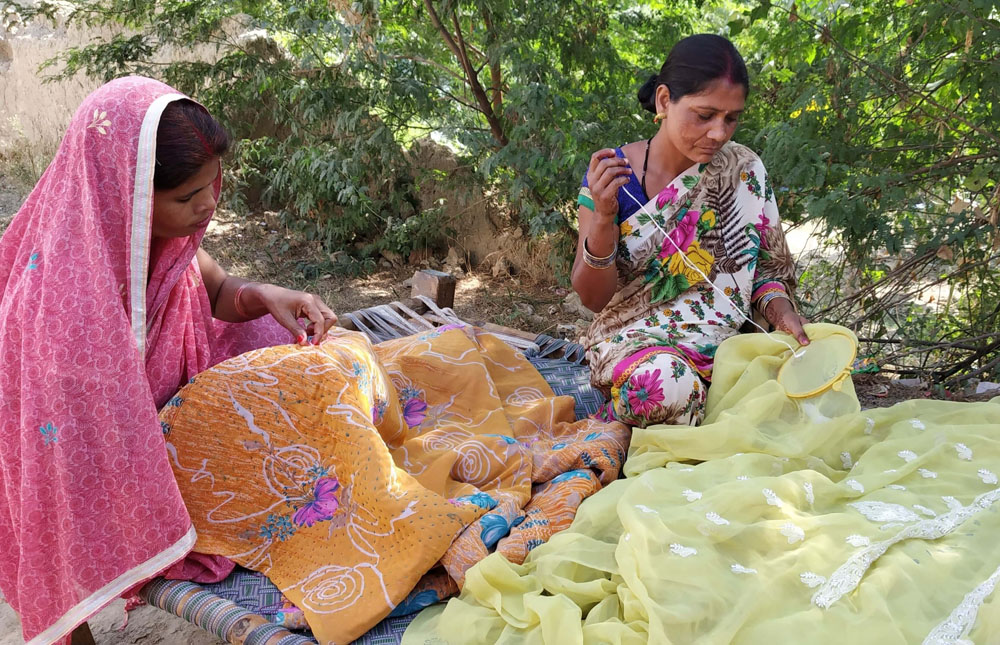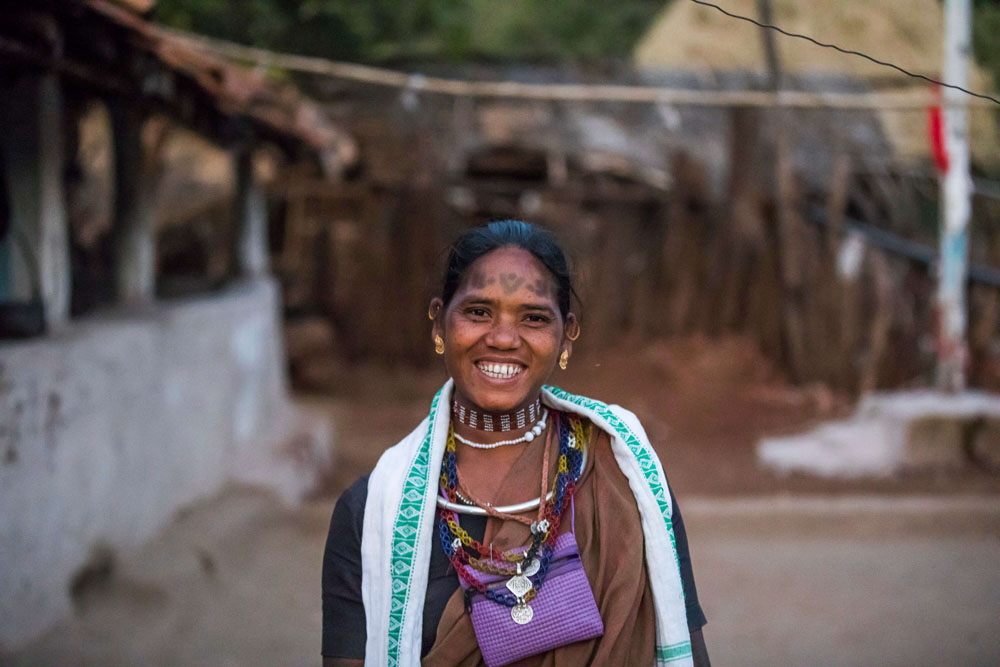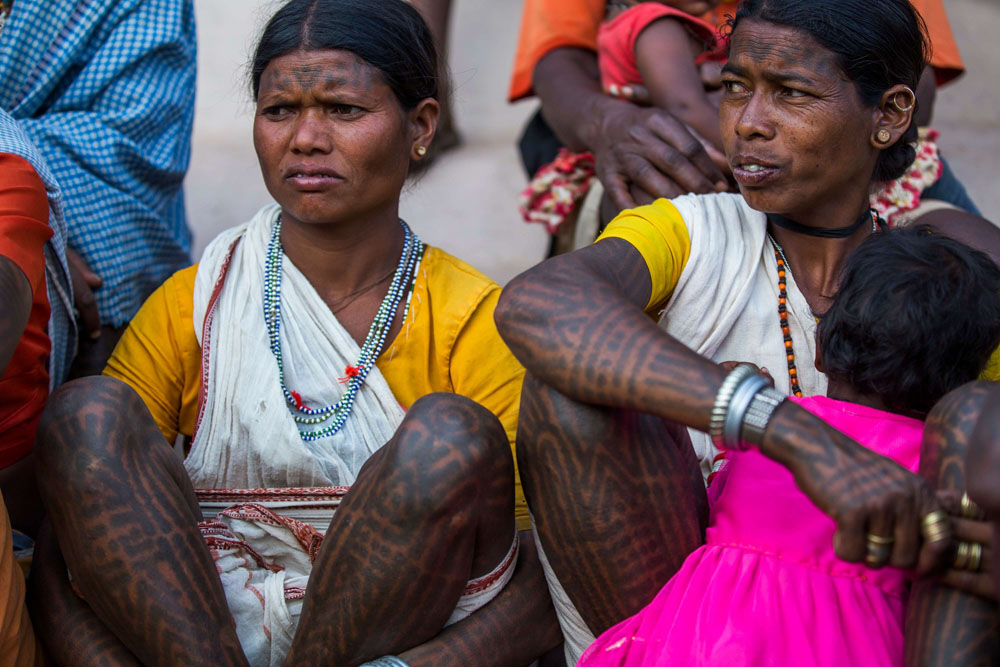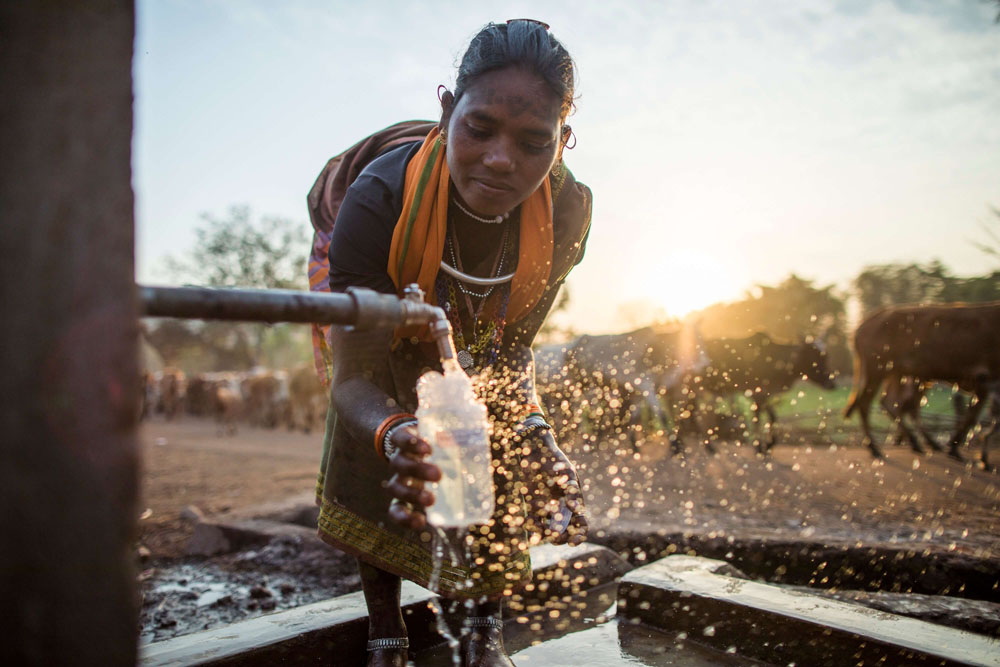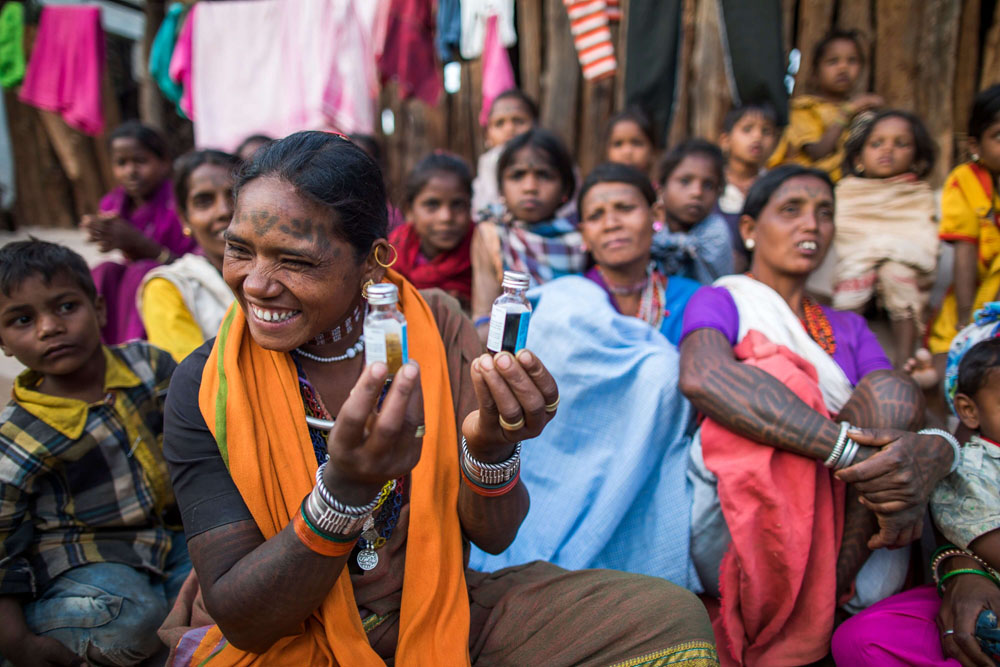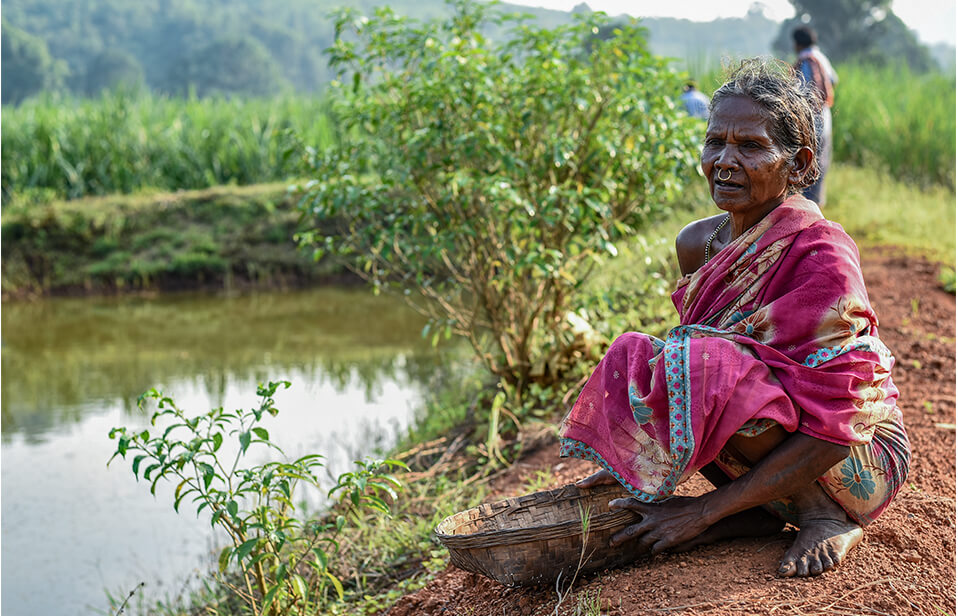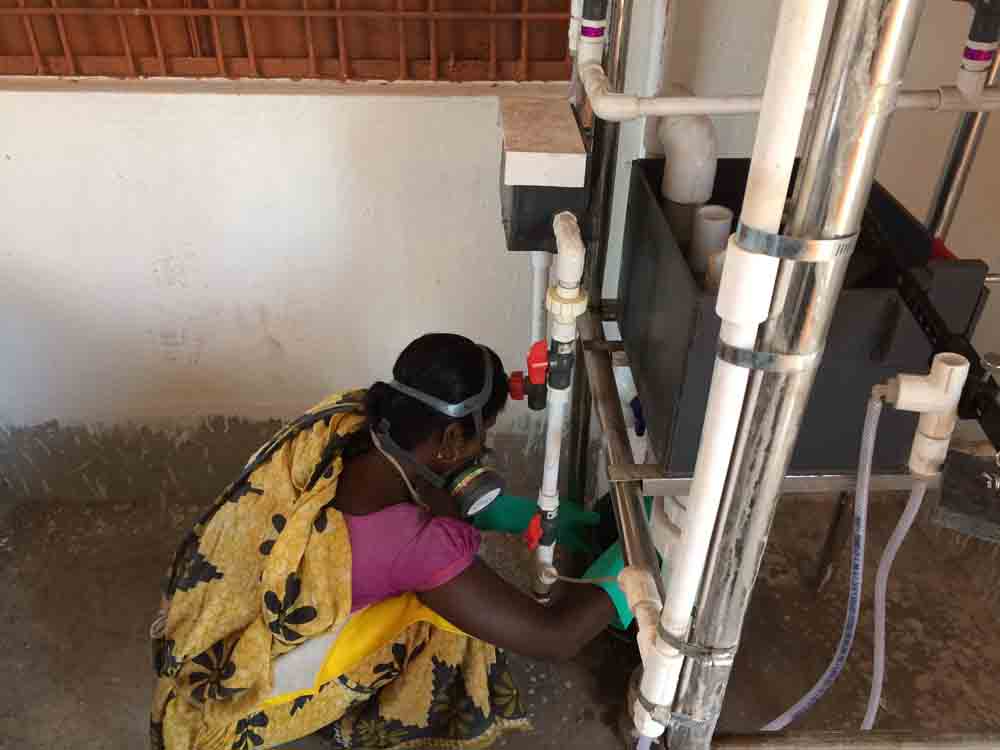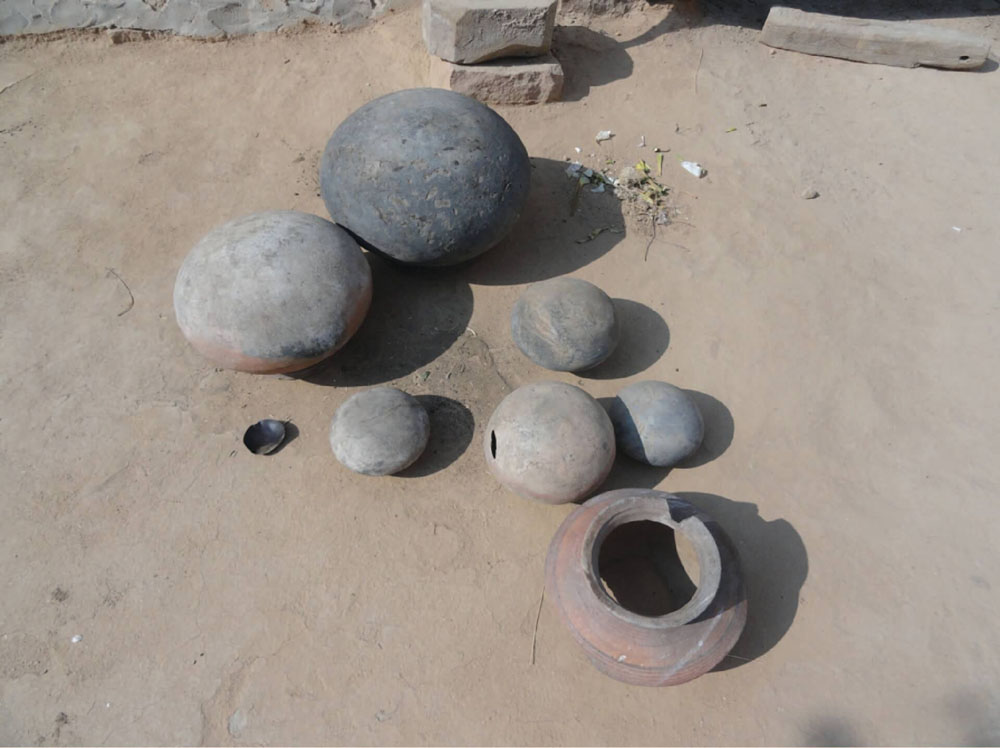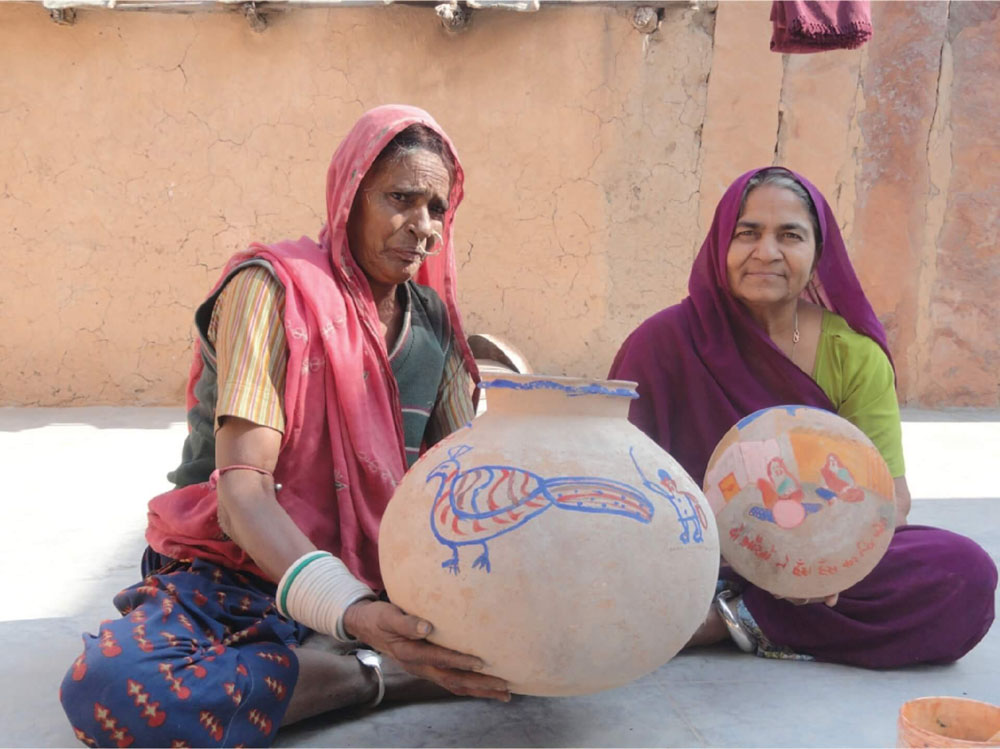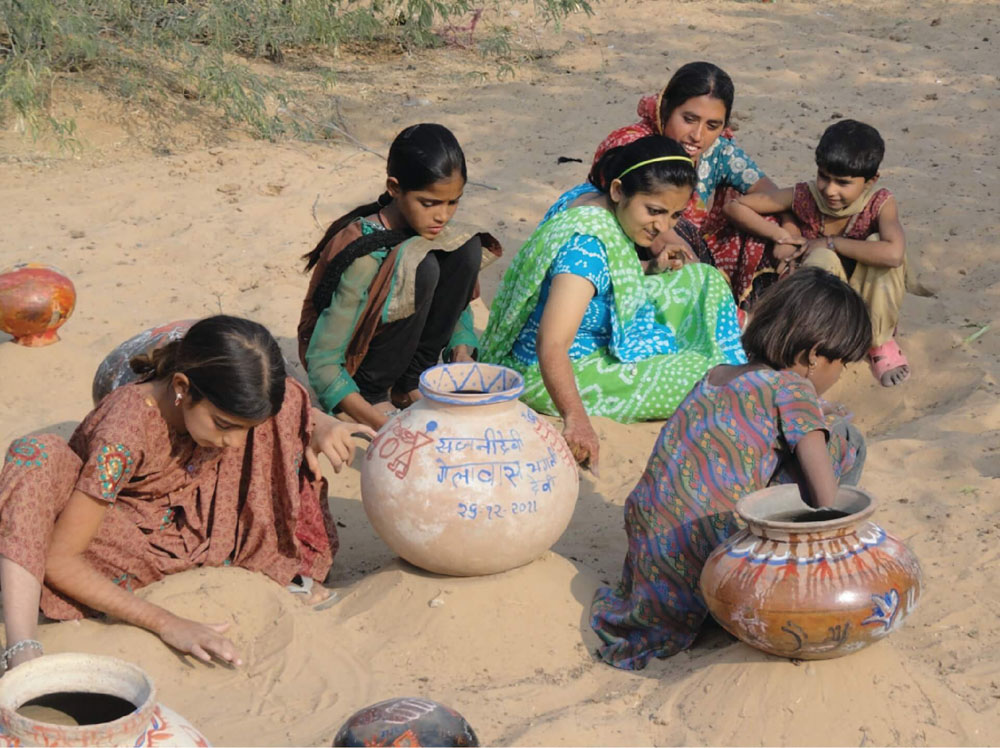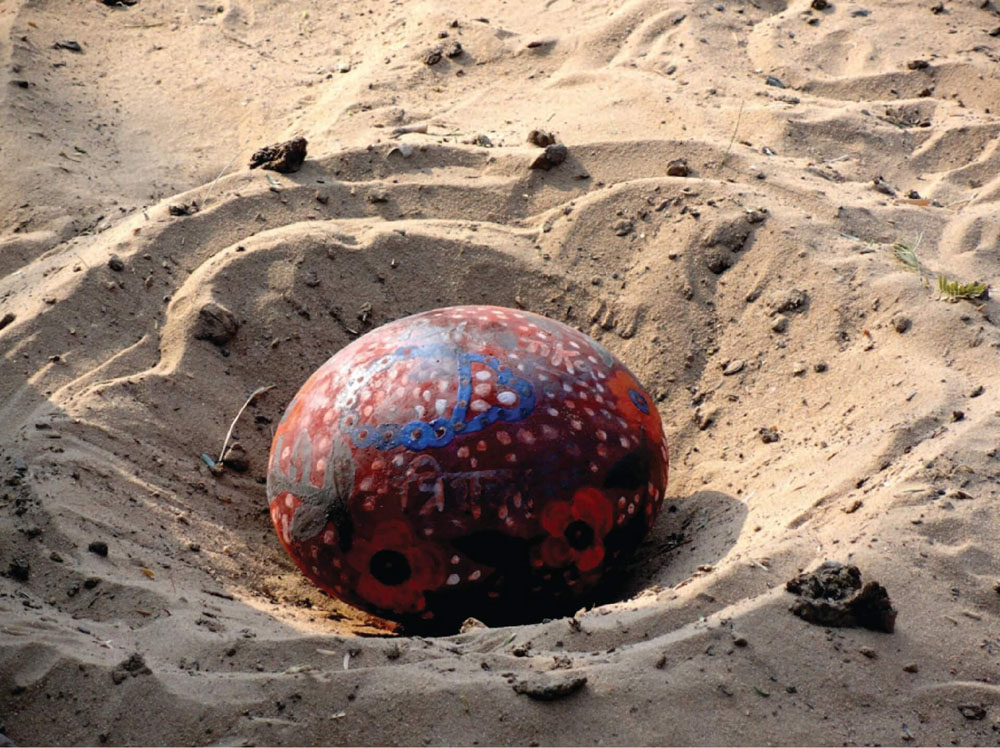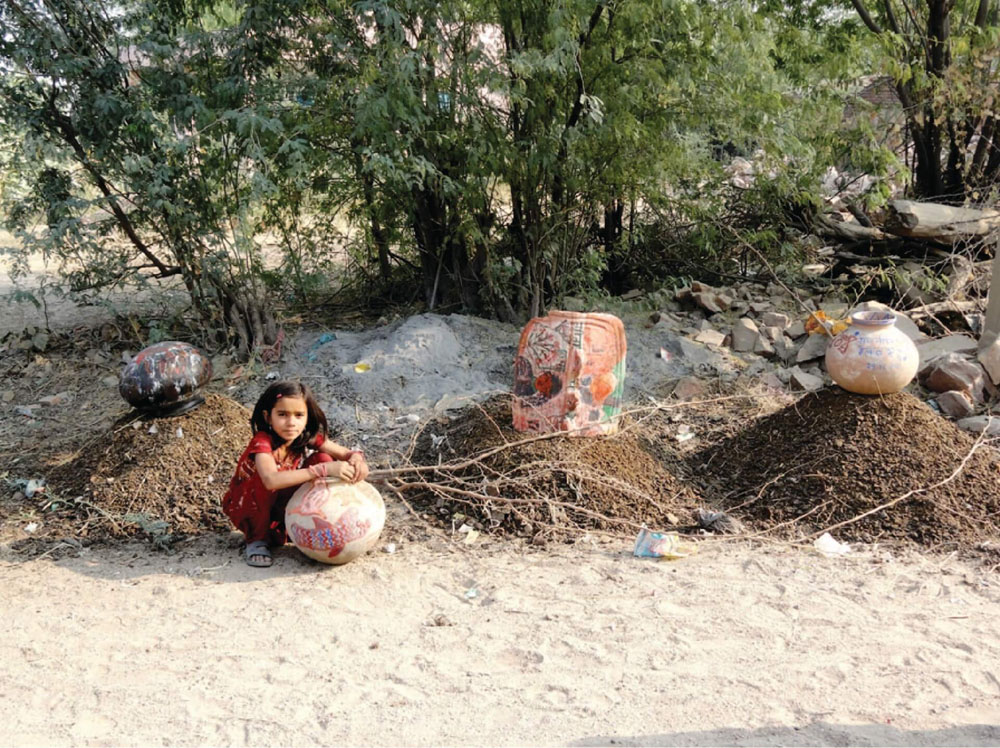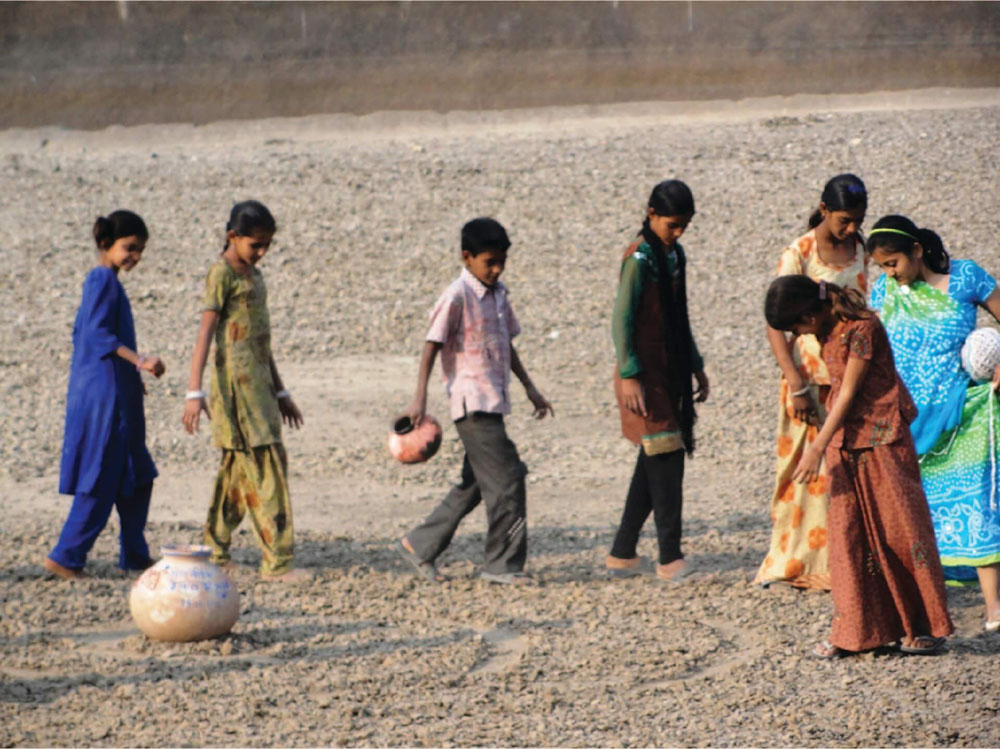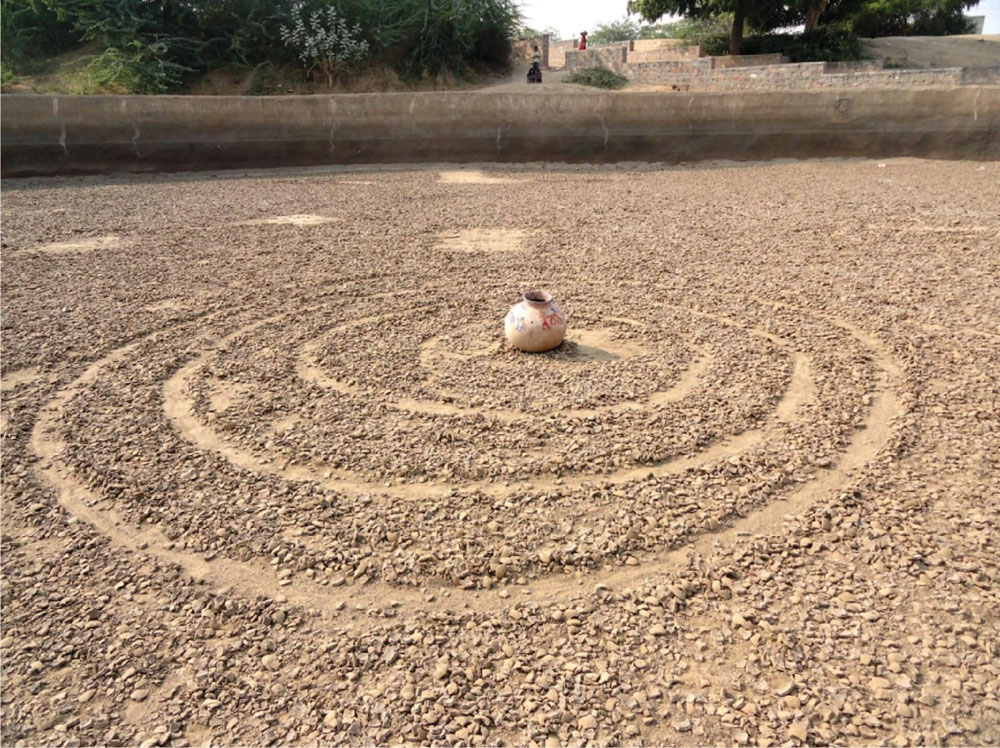WOMENWATERWORK
Welcome to this digital exhibition on Women, Water and Work, curated by Living Waters Museum, a member of the Global Network of Water Museums.
The exhibition is divided into three ‘categories’ of women’s water-related work – her unpaid domestic work in fetching, collecting and storing water as part of the care economy, her productive role in agriculture and other livelihood opportunities which depend on water and her increasingly important role in community water governance. However, we realize that these roles are overlapping, and like water, cannot be bounded by social constructs.
We would like to thank all the contributors who have made this exhibition possible. We invite you to continue to contribute your thoughts, images and ideas around this theme as the entries will be open till the end of this year.
Please send your contributions to: [email protected]
Exhibition Designer: Priyanka Kumari, Art and Design Coordinator, Living Waters Museum
Advisor: Sara Ahmed, Founder, Living Waters Museum
Technical support: Agreem Technologies




Azmatun (18), Saipur Maafi
I studied till the 8th standard, but had to give up on education because we did not have access to water. Water is required for drinking, cooking, household chores, as well as for the buffaloes. Every morning I have to walk miles to the river to fetch water. It takes close to an hour to reach the river and almost two hours to come back with water. Between morning and evening, I make several such rounds to the river for water. It takes up my entire day, leaving no time to go to school.
Hand pumps aren't a reliable option. There are always long queues at the few hand pumps that are here. To make things worse, they run dry after every few buckets. We have to wait a few minutes for water levels to recover. This ends up testing the patience of people standing in queues. Often arguments and fights break out over who will fill water first. And all this is despite the fact that water from these hand pumps is salty and hence mostly undrinkable.
The village Pradhan (head of the village) refuses to help in finding a solution. There are times when we have to travel to neighbouring villages for sweet water. But sometimes even they refuse to give us water. Our health has suffered due to impurities in the river water. The river water isn't clean, as cattle bathe in it. We often deal with cough, cold, fever and stomach ailments. This daily struggle for water, led to my studies getting discontinued. Sometimes I dream, if I had continued going to school, I too could have become a doctor or a teacher. I too could have made a difference in the lives of others.
Prashanth Viswanathan is a freelance photographer working on news and assignment stories from all across India. He has worked professionally in this field since 2006. His experience varies from working for newswires, newspapers and features in magazines, to non-government organizations and other feature agencies.
The focus of his work is on documentary photography, including events, political activism, visual sociology and news photojournalism.
WaterAid transforms lives by improving access to clean water, hygiene and sanitation in the world's poorest communities. We work with local partners and influence decision-makers to maximise our impact.
Every year, especially during the summers, women and young girls of villages from the Tikamgarh district travel for about 1 to 3 km to fetch water for their households. The issue of water scarcity is widespread in India which most adversely affects the drought prone districts such as Vidharbha in Maharashtra, Tikamgarh in Madhya Pradesh and many others. As the issue of water unavailability increases to other areas of the country, most issues related to the problem of water do not get reported on or the attention it requires. Why is it that everywhere you go, in rural parts of the country, one always finds a woman at the source of water, fetching water? What is this relationship that a woman plays with water and the issue that it portrays? To explore these questions and to shed some light on an unreported issue of water scarcity and the social discrimination that becomes a part of it, I decided to use the medium of a camera and further research with the help of local women to establish a new narrative around water, women and work.
Shataakshi Verma believes in creating spaces of dialogue and questioning the 'normal' through her art as well as her grass roots work. Her work with the tribal communities in Jharkhand has been her beginning to the path she is on and has since then worked with different communities and different social problems around the country. Her interest in documenting the marginalized and creating a dialogue with her medium is what drives her to make films and create artwork that she then shares with relevant platforms to create attention towards the issue and mobilize the community in the process as well.
WOMEN & WATER WORK IN DEHNE VILLAGE
Dehne village, situated deep inside Western Maharashtra in Thane district is a popular base village for several treks in the Sahyadris. The agrarian village has a robust rural tourism model put in place by a social enterprise. This is why the village is relatively wealthy and also has good rainfall. During the monsoon season, Dehne, surrounded by lush rainfed rivers, becomes the land of a thousand waterfalls. Yet the village lacks a few basic amenities – road connectivity, health centres and efficient water pipe connections. Its women travel to a well located at the centre of the village or to the river that flows on its outskirts.
But several women don't seem to mind carrying pots of water on their heads and by their waist.
"It's a tradition," they say. But is this tradition bound to change anytime soon?
Women & Water Work in Dehne Village
Women & Water Work in Dehne Village
Women & Water Work in Dehne Village
Devyani Nighoskar is a young, independent journalist based out of Mumbai, India. With a love for travel and exploration, she sets out to lands near and far in the quest to uncover stories of people and places. With 200+ by-lines in various publications, she says that she is hungry for tales and narratives and absolutely loves her job. She captures snippets of it on her Instagram.
She says, "I like to think of myself as dedicated, sincere, hardworking and a tad bit socially awkward. When not exploring or writing, I like to go swimming, or binge watch shows or read a book in a cafe as I sip on a milkshake." She is also a martial artist with 12 years of training in Taekwondo.
and the two carriers under the grip
of my mechanical manus;
reaching home, and taking a long breath
before rushing to take another round trip;
scrubbing pots and pans; and cooking by eight,
because
his breakfast can’t be late;
packing his lunch, and our son’s, too
(while my daughter milks Malkin’s cow);
sending one to farm and the other to school
(while my shadow washes the cowshed);
stitching clothes, old and new,
to make ends meet (and save some for dowry);
soaking our female forms in sweat,
or water, if there’s some extra for either of us;
preparing dinner and bed,
as I’m
a housewife ---
A former journalist, Manisha Sinha is a PhD research scholar in English at Amity University, Noida. Her primary areas of interest are gender studies, Indian drama and English literature. She has qualified the National Eligibility Test for Assistant Professorship (UGC-NET). Presently, she is working on her first novel.
In many parts of the world, fetching water is mainly considered a job for women and children. It is well known, that this places a huge physical burden on them. The photo-story reveals how cultural norms of Kapau, Western Province of Zambia, influence water fetching activity, making it into a "trivial" chore delegated only to women and children. When such water infrastructure is inadequate, the human body becomes part of the water delivery service, reducing them to 'living pipes'. The following photo essay elucidates this case.
The Walk
Even if the distance to the water point could be relatively short, the frequency to collect, number of buckets to carry, weight of the filled bucket, and the path itself, makes the walk excruciating. In a few cases, women walk for 30 minutes from their homes to the water point and back, to fill and carry 10 buckets – which in total can take about 5 hours if they do not have help. Hot sand and thorns on the paths make these walks uncomfortable. However, they also mentioned that, with the right company, a long walk for water can be filled with laughter, conversation and sharing of wild berries.
Cultural Ramifications
When inquired about the reason of carrying out the chore, the most common answer would be, "because it is a woman's job!" This job allocation stems from gendered norms engrained in the culture. These are often defined in the local customs; in Kapau it was the Lozi culture that dictated the behavioural standards for men, women and children. One of such customs is the 'Lobola' (bride price/dowry) practice. Before getting married, the man pays the negotiated amount in the form of money or cows to the woman's parents as a token of gratitude for raising their daughter. For most men in Kapau, they interpret this as a means of enforcing authority on the woman as she has been bought by him. It is therefore now the wife’s duty to perform demanding domestic chores.
Pain due to lifting
When placed on top of the head, the filled water buckets are more balanced and easier to carry. But, without help, lifting the buckets alone to carry them on one's head can be difficult for women of various ages, and may cause severe injuries. Complaining of body pain from carrying buckets is sometimes considered as a failure to keep one's marriage vows in their culture. This may lead to a divorce. This is one of the reasons why many women do not explicitly voice their complaints.
The liabilities (i)
When the bore-well is far from home, water-dependent chores like washing clothes or utensils, are usually done at the well site, causing women to remain outdoors for longer period of time. Multi-tasking with children and domestic duties in these conditions can be a real challenge for the mothers. Others at the bore well, such as young single women, help to care for the young children while their mothers are working. This way, the bore-well become a place for socialising and baby-sitting.
The liabilities (ii)
The plights faced by different women are not the same. The specific roles and responsibilities of each woman makes their suffering unique. One group that stood out was the group of 'mothers'. Having to assume the two roles of a water carrier and a mother, simultaneously takes a toll on their body. This picture shows a mother who is carrying a 20 litre bucket while caring for her children at the same time. She evidently risks her knees, joints and muscles to injuries as she has to balance the weight of the water-filled bucket over her head.
Neha Mungekar is a water manager, urban designer, architect and a photo-journalist from India. The photo essay was part of her academic research titled, “Whose job is it to fetch water?” - Understanding the role of gender in access to water for domestic use in Kapau, Zambia at IHE Delft, Netherlands. For her research, she used documentary photography as an analytical tool to study the gendered norms of that place. She publishes her work under the title – N-Route.
Women carrying water containers in one hand and holding their infant child from the other, hung by the waist, was the most common visual I came across as I travelled in the tribal regions of Gaya district. Sans basic amenities like roads, electricity or water supply these people have stood against all odds. They dug wells, not just a couple, but so many that all the Tolas (hamlets) have sufficient water. A handful of Tolas that have government hand pumps are either not functional or turn dry in summer. Thus, the demand for water not just for drinking, washing but even for irrigation is met by wells that are maintained by these tribal men and women.
All women, young and old had a peculiar way of fetching water from the wells, unlike anything that I have witnessed in other regions which have hand-pumps and proper roads to aid the worker. These women fill buckets from deep wells and carry them on their heads meanwhile holding the child on their back all along. In all the Tolas which are fully dependent on wells, these are largely dug by men, but in Salariya Tand of village Alakdiha, the wells have been completely dug by women of the Tolas.
Their self-reliance sets a powerful example for communities, but it also exposes many failures of the government and society as a whole to provide minimal respectable living conditions in the form of drinking water, proper roads or a safe environment. Education is another important aspect of existence; a small school was constructed however, it is not currently functional since many people had to migrate for seeking employment opportunities. The constant fear of forest officials and even local goons is most common. At one such occasion I had a small encounter to witness what these people go through and was fortunate enough to have numbers in my support.
As a community they are mostly self-sustaining, they grow their own food and labour themselves for all sorts of work. Few who have received elementary education face challenges in pursuing higher studies due to lack of Schedule Tribe reservation certification, an important area where our administration needs to look back and secure those who come under this category. Local NGOs have been trying to raise these issues as well as have helped in the past by making sure that adivasis (tribals) have identity cards. Those with their certified identification back in 2014 elections, voted for the first time and in a way celebrated their independence.
This tribal population even without the most elementary comforts of daily life continues to carve an existence that is highly inspiring. Water, despite being a missing block in terms of its availability, still nevertheless becomes a binding factor where men and women of the household work for it together, against all odds.
Women in the tribal villages of Gaya, Bihar walk for miles several times a day to collect water from sources like dug wells. RupaDevi's 18-months-old daughter looks on as she is tied to her mother's back who is walking back to the village after collecting water. A regular sight in these villages where mothers have to fetch water but can't leave young children unattended at home. The men in most families are either work in the farms or as labourers in other towns and cities.
Chandu Devi and Shalgi Devi both carrying their babies at the well in Alakdiha village in Gaya district, Bihar. Often, women endanger their lives and the lives of the babies with the fear of falling into the well as they precariously balance themselves on logs to pull up water from the well. A long walk through the jungle is the only way to reach this isolated tribal community. Women spend hours and walk miles every day to collect water from water sources like these.
Gasni Devi (61) collects water from the dug well in KathautiyaKewal village in Gaya district, Bihar. She lives with her husband in the village. The well is more than half a kilometre away from her house and the walk to the well for basic daily needs several times a day tires her. The area near the well is slippery and at her age while pulling the water and carrying it back, she has to be cautious to not slip or fall.

Aoun Hasan was a fellow under the WASH Photo Project 2018-19, WaterAid India's first ever photography fellowship. He is a Lucknow born visual artist who has worked on environmental, religious, social projects and film making. With a Master's degree in Human Rights, Aoun has also completed a PG Diploma in visual communication. He aims to build his work on environment, history, culture, religion and politics.
WaterAid transforms lives by improving access to clean water, hygiene and sanitation in the world's poorest communities. We work with local partners and influence decision-makers to maximise our impact.
A drop of water held on precariously to the edge of the tap, about to fall way down. It was the last drop after water supply shut down on a hot sunny, blustery day. Maya walked purposefully, a hint of uneasiness in her hurry to reach the only public tap for miles and miles around. She was late, very late. The bucket and bottles in her hands, rattled with a dull ringing sound as her pace picked up. She had overslept. As she turned around the corner, she drew a sharp intake of breath, there was nobody there! No lines, no shouting, no quarrels. The tap stood solitary, the long pipe glistening as the sun tried to evaporate the last drop hanging on for dear life.
Maya was heart-broken. What would she do now? Where would she go for water? She stood in front of the tap on wet sodden earth, trampled by dozens of feet early on during the day. Tears welled up in her eyes. They fell down on her cheeks, the last drop of water did too, into the bricked abyss below, as if on cue. The tenacity of holding on to something or some hope giving way to helplessness.
Komal Gupta is an Indian writer and poetess living in Gurugram, Haryana, India. She writes under the pen name of tejaswiniaura. She was shortlisted for the Orange Award for Poetry 2018-(Women's Web), she is the winner of Mirakee- Microtale Contest, Theme-Time 2018 and many online contests on Fuzia. She is a published author, a featured poetess on many social media sites, nationally and internationally. Her Slide Show "The Power of Words"was showcased in Cubbon Park Metro Station under the Wait Time Project by Art in Transit Bangalore in April 2019. She holds a Bachelor of Commerce (Honours) degree from Rajasthan University (India) and is a certified Montessori teacher.
"Adze ato mani" (meaning something has falling into my eyes) is the name of the white cloth. "Adze ato mani" is an Akan (Ghanaian) proverb which also means a loss of a relative; the death of a husband, wife, child or a loved one. Gradually, a lot of things are happening which are leading to a loss of cultural identity in many parts of Africa where the loss of a husband can lead to the social denialof a woman from working, cooking and even bathing in water. A widow loses the right of existence - this is the expression of the artist performance and installations.
Women and girls play key roles in obtaining and managing water in the world. Imagine going through the day without access to clean, safe water in your home for drinking, cooking, washing. Water, a human right, is critical for human survival and development.
most part of Africa, collecting water takes time. In order to get water for drinking, bathing, cooking and other household needs, millions of women and girls spend hours every day traveling to water sources to get some for their family. The artist in performance showcases the role of woman in using water in society.
Gender equality is essential to enable women and men to participate equally in society and in the economy. Significant progress has been made in closing gender gaps in Sub-Saharan Africa. However, despite gains, African women continue to face some grim facts. Girls are still much less likely than boys to benefit from a secondary education. Women and girls often have little influence over resources and norms, and face restrictions on what jobs are appropriate for women, thus limiting their earning potential in agriculture, enterprise or the labor market more widely. The artist attempts to show gender loss of identity, through performance, blurring distinctions between genders.
Isaac Kojo Biney Aggrey professionally known as KOJO BINEY (b. 1986). (B A Arts Education). He is an artist and an art educator.
He employs multi-art techniques such as painting, sculpture, designing, installation, photography and performance art. He practically occupies into the environment, society and various culture to create dialogue on the existence of life, rising alarm on issues across all circles of politics, economy, education, family, society and environment.
He sees presentations of how feminine figures are expressed, the blind spot of their actions and movements as its ugliness and beauty is identified and produced.
Rapar block in Kutch District is considered to be one of the most arid zones of India. There are 97 villages and 120 vandhs (hamlets) registered in the official records of the government. Apart from this, there are another 120 vandhs which do not have any official registration. Therefore the community living in it is not getting enough support from the government. Rapar block is a dry, saline, arid zone – also known as the dark zone since the groundwater extraction is as high as 90 - 100%. The ground is saline, due to its closeness to the desert. The environmental conditions are extreme from 47 degree Celsius in summer to 6 to 7 degree Celsius in winter
In terms of water resources development too, the priority in this millennia has been for mega projects, with complete neglect of local, community driven efforts like well-recharging, check dams, dug wells, lakes, step wells and wetlands. The biggest casualty of dominant priorities for mega projects and the simultaneous neglect of local water systems is groundwater, the invisible water bank that we can fall back on when rains fail. In that sense, sustainable groundwater, recharged by living local water systems is the real water lifeline. These series of photographs are captured from various villages of Rapar, Bhachau and Nakhatrana block of Kutch District, where Samerth is working in developing water resources with community participation.
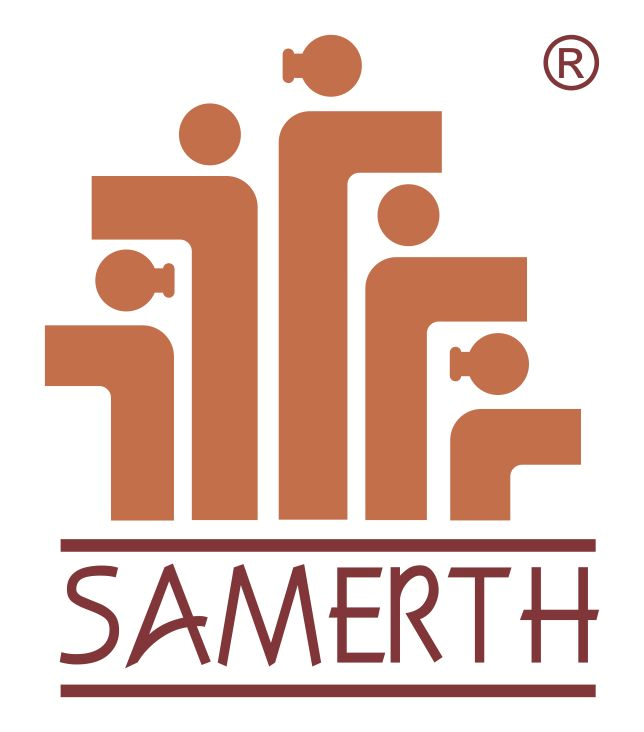
Samerth is working in the arid region of Rapar block of Kutch to address the issue of water security. The operational area of Samerth includes 97 GPs of Rapar block where gradually Samerth has expanded its coverage- starting from 20 GPs and understanding the local issues related with water availability and further requirements; Samerth has developed Water Security Plans (WSPs) of all the 97 GPs. in 2007 to 2012 and extending into another 37 GPs and since 2015 focusing on the entire block to create a sound database. Samerth is also working in Ahmedabad and in Chhattisgarh to achieve the aims of reaching the unreached and the most vulnerable communities for ensuring their social rights and protection.
Samerth believes that water security is a combination of access to safe water, availability of more than 2-3 sources that can suffice the needs of drinking water for the entire 12 months, with communities through understanding of recharge mechanism of the source, catchment, groundwater, conservation techniques and hydro geological understanding that creates holistic knowledge keeping in mind the fast depleting water resources, salinity ingress, changing pattern of rainfall and climate change. Samerth is working keeping in mind the broader definition of water security with the key objective of promoting water safety, quality and security. Since 2017 Samerth has started constructing water harvesting structures in Dholvaira village in Bhachau block with the support from Water Harvest.

Meher Kaur is an undergraduate student studying Economics and International Affairs at the University of Richmond in Virginia, U.S. During the summer of 2018, she worked with Gram Vikas, an NGO based in Odisha, India that focuses on water and sanitation development work. As part of her internship, she lived and worked in a rural village for two months where she producedthis short documentary about how access to water an essential part in rural development is as well as improving the lives of rural women.
Sustaining life against the demographic weight,
The multiplier effect of 'resourceful' depredation,
Harnessing the colonial ruptures,
And the sweeping away of historical writing by its cultural antecedent,
Only to narrativise generations of wishes and scares.
Amidst this countervailing pressure evolved- dialogue,
A Feminine Bechdel Test of presence,
A cascading chronology of seasons, damage and rerouting,
To assert interdependencies and differential allocations,
To accrue value to water beyond families, domesticity and ideologues.
Water- store, claim, harness:
Woman- bound, possessed and channelized;
Of hydraulic societies and her undervalued aqueous laboriousness,
Let the fluid metaphors flow,
With an undercurrent of local aphorisms
and jugaad.
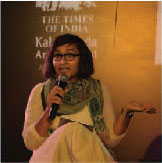
True to her initials loves being in the liminal state of flux, 'AS' making her identity temporal. An assiduous literary researcher for the gendered and socio-economically marginalized communities/writers of South Asia and Canada alongside her research on the Indian Education System, Aesthetics, Culture and Arts Management. She ably co-curated the Literature segment of Kala Ghoda Arts Festival 2019. The US Consulate has nominated her as one of those individuals who can lead sustainable transformation in India for their Integrated Leadership Program. She has also received the President's award by Dr. Abdul Kalam for relentless service to humanity. The Times of India featured her as a talented young achiever and more than 150 other regional newspapers for endorsing the indigenous arts of India. She has presented her research papers in several National and International conferences worldwide. She is currently onto an inter-disciplinary research on the water resource of Kutch.
For more than two decades, the Society for Promoting Participative Ecosystem Management (SOPPECOM) has been working to negotiate equitable access to water for productive purposes for women, landless communities and other marginalised groups in drought-prone areas of Maharashtra, western India. The process has included capacity building for women farmers to facilitate their participation in community based water user associations for irrigation management. Typically, participation is contingent on land ownership – and women own less than 10 percent of cultivable land in India. Through women-led sustainable and innovative agricultural interventions, policy advocacy and alliance-building, SOPPECOM and its partners have been able to negotiate space for women in water governance at multiple levels.
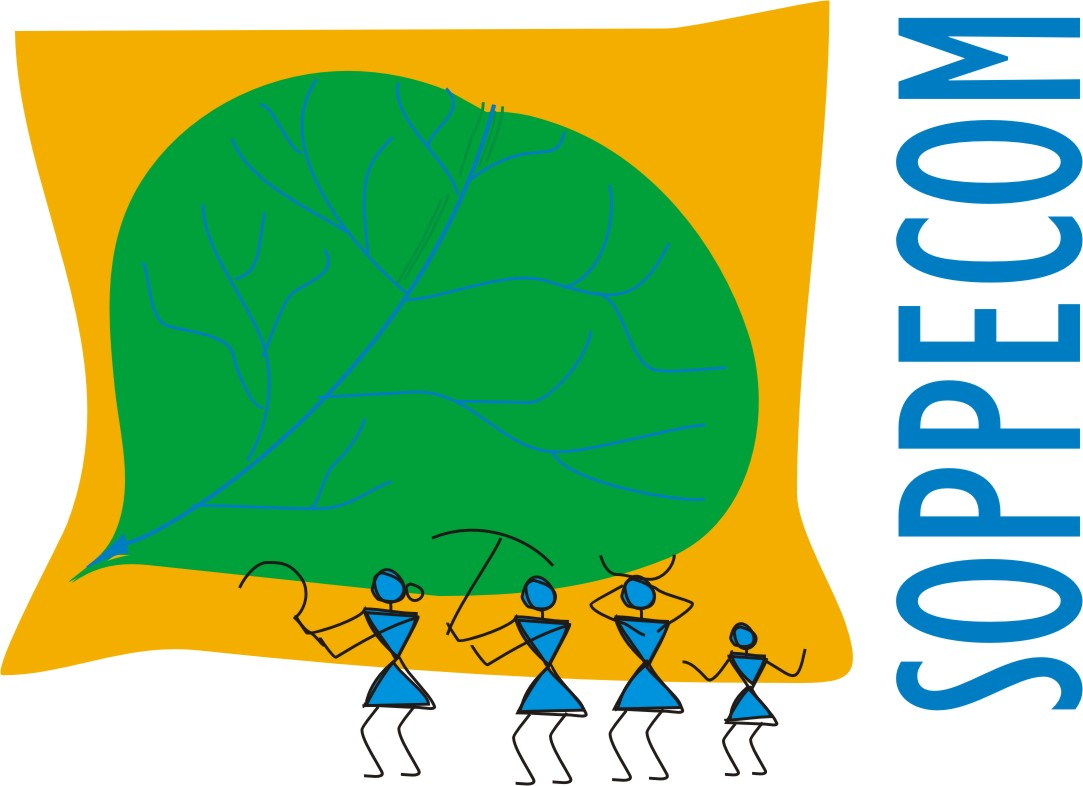
Society for Promoting Participative Ecosystem Management (SOPPECOM) is a non-profit, non-governmental organisation working in the area of Natural Resource Management (NRM) primarily in the rural areas. It is committed to the principles of sustainable and rational use of natural resources, equity and social justice in the distribution of benefits especially to the disadvantaged sections like dalits, landless, women, democratic and decentralised governance of these resources.
Working since the early 1980s in drought prone areas of coastal Gujarat, Utthan, which means upliftment in Hindi, has considerable experiences in developing gender-sensitive institutional mechanisms and alternative, low-cost WASH technologies. Through promotion of women's decision making in Village Water Committees it has facilitated gender-awarewater and sanitation planning. Behavioural change efforts have led to the adoption of appropriate technologies and changes in work burden sharing between men and women. Numerous women are leading the way in the use of water saving technologies and less water-intensive crops. Additionally, women in fishing communities have been helped bythe simple use of umbrellas, weighing scales and proper storage vessels when they are selling fish in local markets.
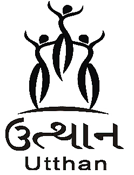
Utthan, a registered non-profit organization, has been working in four water stressed and resource poor districts in Gujarat for the past twenty years. Founded in 1981 by four professional women inspired by Professor Ravi Mathai's famous "Jawaja" experiments in Rajasthan, interventions were directed at initiating sustainable processes of empowerment among the vulnerable communities to struggle for their basic rights.
This story comes from an urban slum called Purvideen Khera in Lucknow – a poor settlement of around 360 households, situated next to Haider canal – that has now developed into a drain thanks to the unplanned urbanization in the city.
"I enjoy doing all my household chores now!" exclaimed an enthusiastic Gudiya Gautam as she fills up her buckets smiling ear to ear and posing for me. For the well to do it might just be a very normal liquid pouring out of the taps but think of those who have to walk miles to reach to a single water source where there are already many people queuing up for that elixir. What's even worse is the fact that the laborious task of carrying water to and fro is the responsibility of the women of the family, who without fail wake up early everyday for this drudgery, as they are the ones who use water for nearly every household chore. Gautam adds on that with accessibility to water she is able to save upon some time which she utilizes in resting or engaging in embroidery work, earning additional income for her family.
For the newly married Suman Rawat the nightmare of fetching water even in adverse conditions has ended. She woefully remembers the time when she had to wake up at odd hours and walk kilometers to reach the only hand pump in the community. She and her mother-in-law, Pushpa, used to go together to fetch sufficient quantity of water for their family in time. Suman added on that "the sound of flowing water has been her favorite from childhood days and now when it comes from the bucket it's even more soothing". Suman now manages the household work with little help from her mother-in-law while Pushpa spends her time in making mattresses for the family or the other community members; sometimes she also takes up embroidery work like Gudiya and adds to the family income.
These three neighbors happily tell me that the most drastic change they can see in their community is the harmony that prevails. Earlier there were only quarrels either between the community members or in the family and the reason knowingly or unknowingly happened to be water. "Water empowers women" is the insight that I developed from the visit. Whether it is resting or engaging in other work, access to water gives the women of the community new hope to venture out in the direction of their interests. From enjoying even the simply household chores to contributing to the family's wallet, it gave these women a sense of freedom that can't be traded for anything, ever. For many of us access to water might not be that troublesome but for the likes of Pushpa, Suman and Gudiya (and countless other women) the picture had been challenging.
Archana Pandey is working on Wateraid's project on WASH with Vigyan Foundation since last one year as a Project Coordinator. A zoologist academically, things took a turn and she was introduced to the development sector. Working for water, sanitation and hygiene has made her realise the crisis that we are heading towards and conveniently ignoring. Access to water makes the lives of women in the household easier and which is why the story here covers the changes that were made in the life of the women residing in an Urban Poor settlement.
Preeto's lean body is discernable from a distance. The green mulmul (thin cotton) dupatta (scarf) she is wearing is making her standout on the dusky pathway. The dupatta, completely drenched with sweat today, once used to be the most prized possession of her wedding trousseau but today, the big round mirrors sewn on its edges seem to have turned against her, burning holes in her skin. The shade of sparse wild Keekars on the way is too measly to provide any respite from the angry sun. Her feet are tired and body weary, but she has to walk half a mile more to reach home. She started at dawn right after making tea for Gurbacchan and now the sun is overhead. So many household chores are yet to be done… cooking, washing utensils and clothes. The three brass pots on her head seem to be getting heavier with each additional step and each additional thought, analogous to trajectory of life which gets more and more heavy with each passing year and each dying dream.
Two years back when she entered her husband's home as a bride, life was so crisp and fresh. The fragrant dreams used to suck the drudgery out of household chores. Work was never an issue for her, since she grew up in the absence of a mother and unlike her maiden home, the proximity of the village pond to her marital house made her task of carrying water for household needs easy.
Last year when that pond was acquired by a famous shoe company for setting up a factory with the promise of providing employment to all members of the village, she, like all her neighbours, was bursting with happiness. Steady employment for Gurbacchan could mean so many things, new walking stick for her father-in-law, fresh chappar on her hut, additional pots to store water and grains, gleaming new bells for Kali the goat and so on.
The shoe factory kept the promise and provided employment to unemployed youth including Gurbacchan at a good salary. Her household was thriving now with new bells for Kali, new chappar for hut, a walking stick for her father-in-law, a new trunk for keeping her clothes and sparkling pots for storing water and grains. Life seemed happy but for two things. The constant stench of the leather emanating from Gurbacchan's body made her nights sleepless and the toil of carrying water from the distant pond on the edge of the adjacent village, twice each day, left her restless.
Prosperity is preferable to poverty, but prosperity at what cost and for whom. Preeto is now wondering if she should be happy about Gurbacchan's employment or feel sad about her new drudgery which is parching both her soul and her throat.
Busy in her thoughts, she enters the door of her house, keeps the pot down near the window sill, pours some water in a well-scrubbed shining brass tumbler and drinks it in a single gulp. If not the fire of her soul at least the thirst of her throat could still be quenched.

WaterAid transforms lives by improving access to clean water, hygiene and sanitation in the world's poorest communities. We work with local partners and influence decision-makers to maximise our impact.
Budharwati Devi (30), Dindori, Madhya Pradesh
When Budharwati Devi (30) lost her husband a few years ago, she was left behind to look after her three children. Bhudarwati's bright smile doesn't let anyone know what all she has been through. Until a year ago, Bhudarwati and most of the villagers of Pondi village in Dindori, Madhya Pradesh made peace with the fact that such sudden deaths happen due to some super natural powers or evil spirit of a deceased family member. "He [my husband] was often down with an upset stomach or vomiting. He could hardly digest any food… We all thought that he is unwell due to some higher power," shares Bhudarwati shyly. "However, it was much later that we understood the reason behind these deaths," she adds. Bhudarwati is not the first or the only one to go through this ordeal. Many others in the village also claim that it was a common sight to see family members fall sick with diarrhoea and then lose their lives. With the health centres at a distance, they would often try to cure their problems with home remedies.
In 2005, Bhudarwati got married and came to Pondi village. Belonging to the Baiga tribe, Bhudarwati's hands and legs are all covered with the traditional tattoos. "These tattoos are our identity. They are painful, but still they are our only form of identity as a tribe and it also shows how strong a woman is," she says.
Pondi village in Dindori is home to over a hundred Baiga families. Agriculture and forest are the two main sources of income for them. Located in the heart of a lush green forest, the houses are scattered over an area that is uphill. Water has always been a concern for the community as they barely use the water from wells and traditionally believed that water that flows is always pure to drink. Thus, they collected water from the two natural spring at the hill nearby. The walk to the spring was also a tiring one. Women had to walk through the forest uphill and downhill several times a day; a total distance of about a kilometre [one-way] for each trip to the spring.
What the community wanted was not just water supply near each household, but also a filtration technique that would provide access to clean water.
As a first step, a Jal Prabandhan Samiti (water management committee) was set up in the village. Twelve men and women from the village were encouraged to join the committee to ensure long lasting solutions for their water problems. Bhudarwati, an active member of the committee was dedicated towards the cause, and was hence nominated as the head of the committee. She and the other members attended various training sessions on testing of water, handling water collected from the source and storing it at home, as well as maintenance of water sources and infrastructure.
With regular meetings and discussions, Bhudarwati and the committee along with WaterAid and its partner devised a solution for their water problems - a slow sand water filter. Water from the two springs was collected in a storage-cum-filtration tank with the help of pipelines. This tank had five chambers filled with sand, gravel, charcoal and net in different chambers. As the village is located on the foot of the hill, the system works on gravity. The chambers are connected with each other through small openings at different heights so that water is passed through each chamber through gravity and not electricity. The water gets filtered in the process and is connected with stand posts [water outlets] near each household; one stand post for about 4-5 houses. This has led to supply of clean water at the household level with a drastic decrease in the time to collect water.
The community soon realised the difference in their health condition on using this filtered water. Fewer children complained of stomach ache as compared to the earlier times.
Today, Bhudarwati and the committee meet once a week to discuss if there is any problem in maintaining the water filtration plant. The community also engages with them to seek solutions together as most of them of suffered from the various implications of accessing unclean water.
"My husband wouldn't have fallen ill if at all he or any of us knew that the water was the main reason. I wish I knew about all this, he would be with us and I wouldn't have to depend on my in-laws for every small little thing."

Prashanth Viswanathan is a freelance photographer working on news and assignment stories from all across India. He has worked professionally in this field since 2006. His experience varies from working for newswires, newspapers and features in magazines, to non-government organizations and other feature agencies.
The focus of his work is on documentary photography, including events, political activism, visual sociology and news photojournalism.
WaterAid transforms lives by improving access to clean water, hygiene and sanitation in the world's poorest communities. We work with local partners and influence decision-makers to maximise our impact.
Surdai Majhi from Sindhipadar village in Kalahandi district of Odisha waits after feeding the fish in the pond. She walks down from her house, atop a hill, where she lives with her farmer son, everyday to care for the pond and the fish that brings livelihood to her family. Two decades ago, the land around her house was barren without trees or vegetation. Watershed work initiated by Gram Vikas has changed her family and the village. Today, she lives to tell the story of regenerating forests and bringing new life to the land and her community through her water work.
Binodini Patra shatters many stereotypes of women, machines and technology. She is operating the Hydro-doser, a smart-tech system designed to work specifically in rural and natural disaster-ridden areas as an easy and efficient way to disinfect water sources of disease-causing pathogens and viruses. The Lahanda village, in Keonjhar district of Odisha, is the first site of this technology by AguaClara Reach and supported by Gram Vikas. Binodini, a member of the Village Water and Sanitation Committee, is at the forefront of showing the world that electricity-independent clean water technologies are viable in rural areas.
"Let the men not come. We will set it up." Pramila Bisoi is a fighter. Most of India knows her today as the Biju Janata Dal Odisha candidate for prestigious Aska Lok Sabha seat in the 2019 Parliamentary elections (which she won!). But two decades before, she has trailblazed paths in her village, overcoming apathy from the men to get water to the homes, mobilising women to protect the forests around her village and making her village open defecation free in 2002, long before the Swachh Bharat Mission, India, was even thought of. In this film, she talks about how she gathered support, resources and her community to make her village water secure, regenerate forests and livelihoods and ensure dignity for women.
Come, dwell a little deeper
Into the perils of her life;
The pain, the task and the hopeless misery
Of being a Water Wife.
Her day starts well before dawn
Stranger to her is enduring sleep;
She tucks her pots and hikes so far
To get water from wells, so deep.
Her fragile shoulders carry the load
To make her family survive;
'Cos without water, the ultimate elixir
No form of life can afford to thrive.
Since she was a little girl
Her hands were ripped off her fate;
Replaced were her pencils and books
By earthen pots she is carrying till date.
Irrespective of heat, cold or rains
Despite fever, nausea or shiver;
She takes that dreaded walk everyday
To the nearest lake, pond or river.
Every day she has silently suffered
On the paths she daily walked;
Harassment, violence, rapes and murder
Till her safe haven, she is stalked.
She gives up on her virtue
Washing and bathing in open space;
Her heart is worried sick every time
Her daughter is late from the bath place.
She has lost her personal freedom
Suffered damages to her back, neck and spine;
Every time she fetches water
Her eyes pray for an intervention, so divine!
She combats diseases and illnesses
Gamble against safety odds so wild;
Disasters that are brought by impure water
Of likes of the death of a new-born child.
She walks for hours to great distances
Dedicates unaccountable amount of time;
Making her do this day after day
Is almost equivalent to bearing witness to a crime.
Why shouldn't she get a say
To change life dynamics of her own;
Given the chance, she could be the best
Water governess this world has known.
Free her from her invisible shackles
By channelling, storing and reusing water;
She deserves this much propriety
Her life is not for others to slaughter.
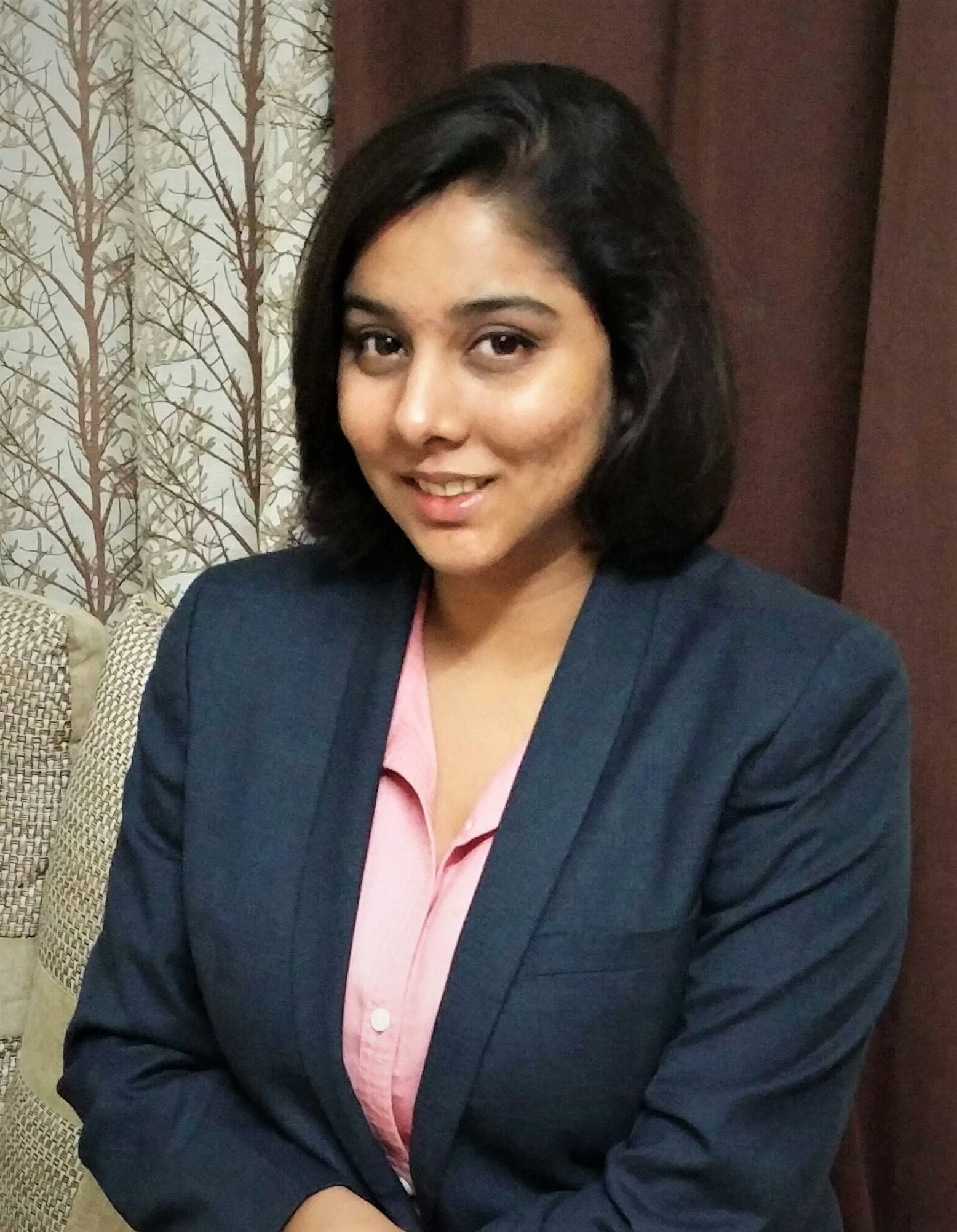
Shaivya Singh is an Architect and a Planner and works as a consultant for National Rurban Mission (NRum). Her job entails working in the field of rural development to turn villages into model examples of rural advancement. She works with tribal communities on components like provision of drinking water and skill development. Her alma mater is NIT-Bhopal and she has acquired her post-graduation from SPA-Bhopal.
When she is not working, you might find her engrossed in a book. She enjoys writing poems and stories. She loves swimming and invests her spare time in planning trips she eventually doesn't end up taking.

WaterAid transforms lives by improving access to clean water, hygiene and sanitation in the world's poorest communities. We work with local partners and influence decision-makers to maximise our impact.
The images are from the project Mitti, Paani, Kahaani in a village called Gelawas, near Jodhpur, in Rajasthan.
Here, the climate is dry, means of water are scarce, dried ponds act as cricket playgrounds in wait of the rain to quench their thirst, utensils are cleaned with ash and sand, homes try to harvest rainwater beneath their courtyard, young menfolk from most homes have migrated to cities like Bangalore, in search of jobs or to open a shop.
This leaves the womenfolk alone with their children, and the older generation of whom the men spend most of their time drinking hukkah and women taking care of the house. There is a carpenter, potter, goldsmith, ironsmith but very few farmers.
Such is the story of this dry, thirsty land….where I came to work on a 14 days international art residency programme. Here, I worked with the women and children using local materials such as broken earthen pots to raise awareness about water scarcity, sustainability, and rich cultural heritage, traditional practices through installations, exhibitions, art, music dance, painting and the celebration of life.

























































